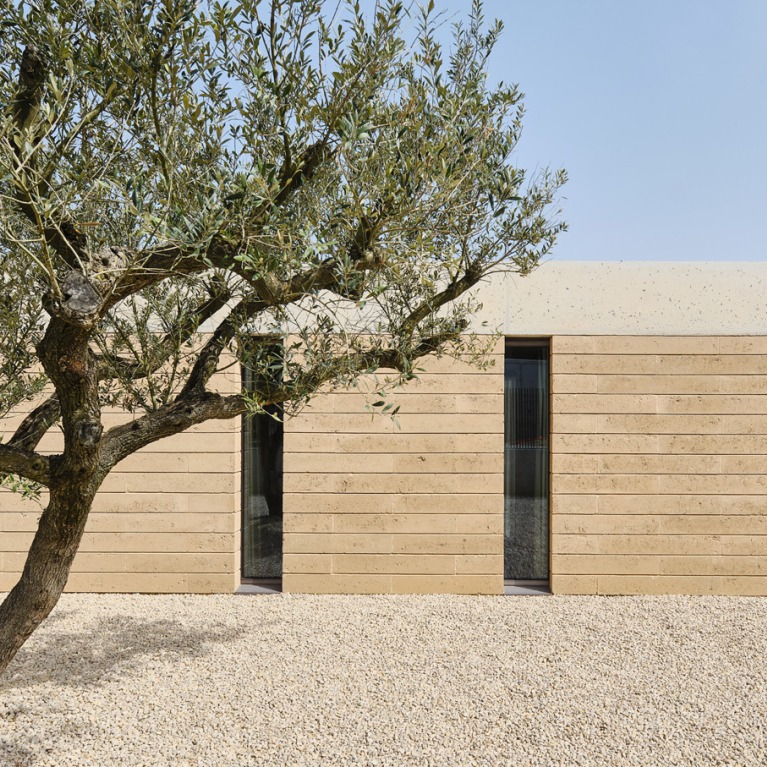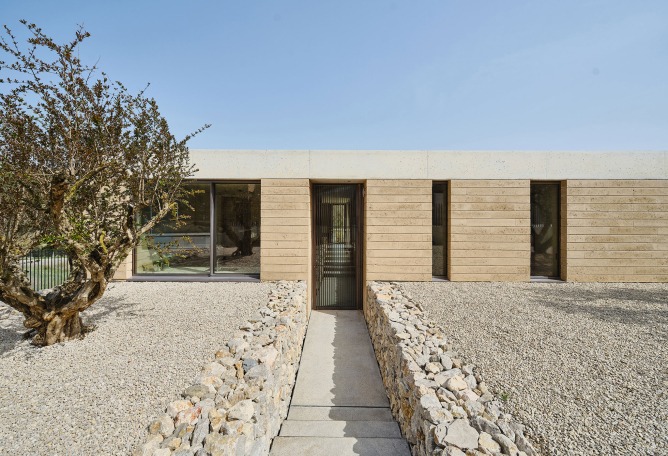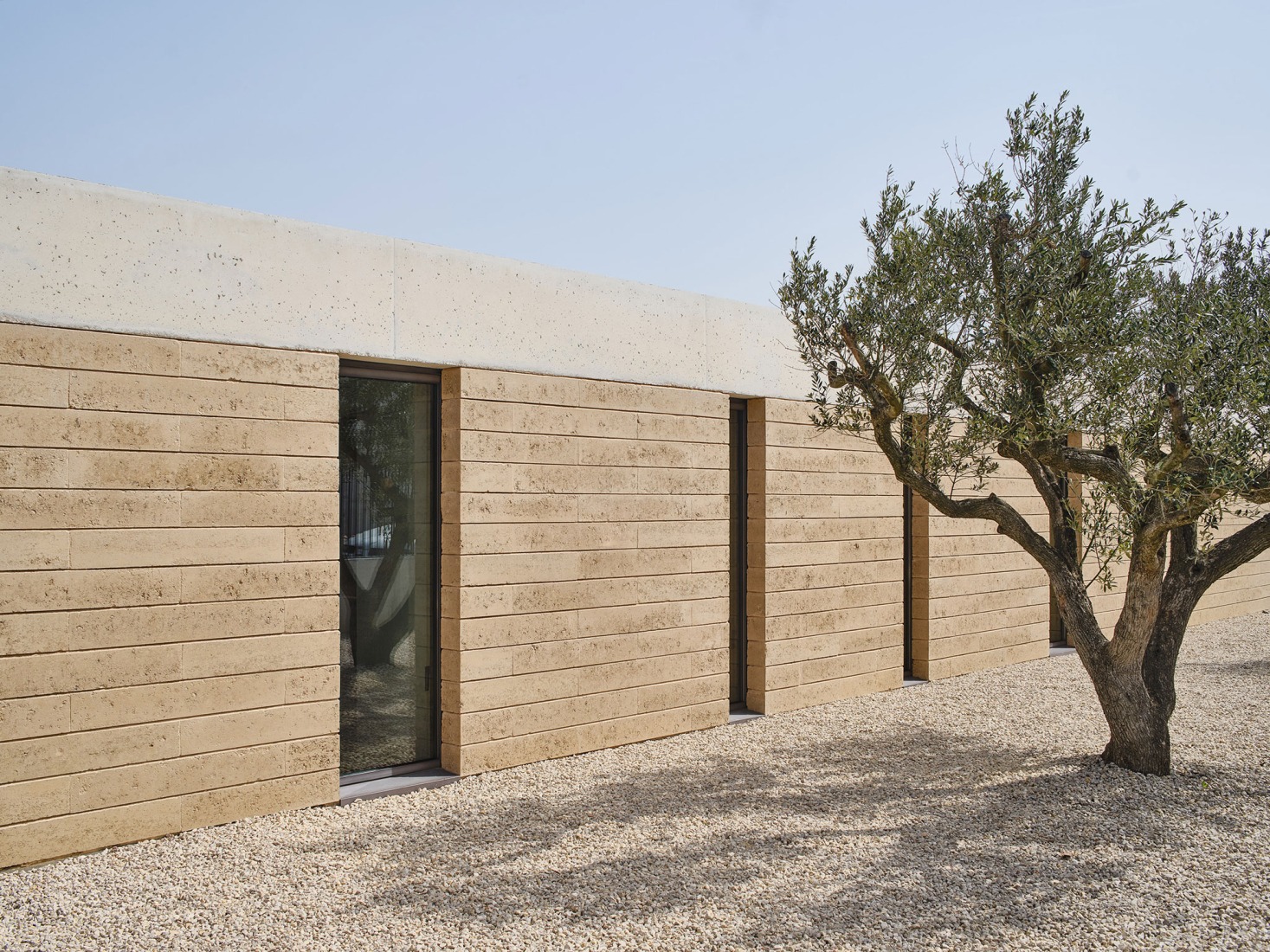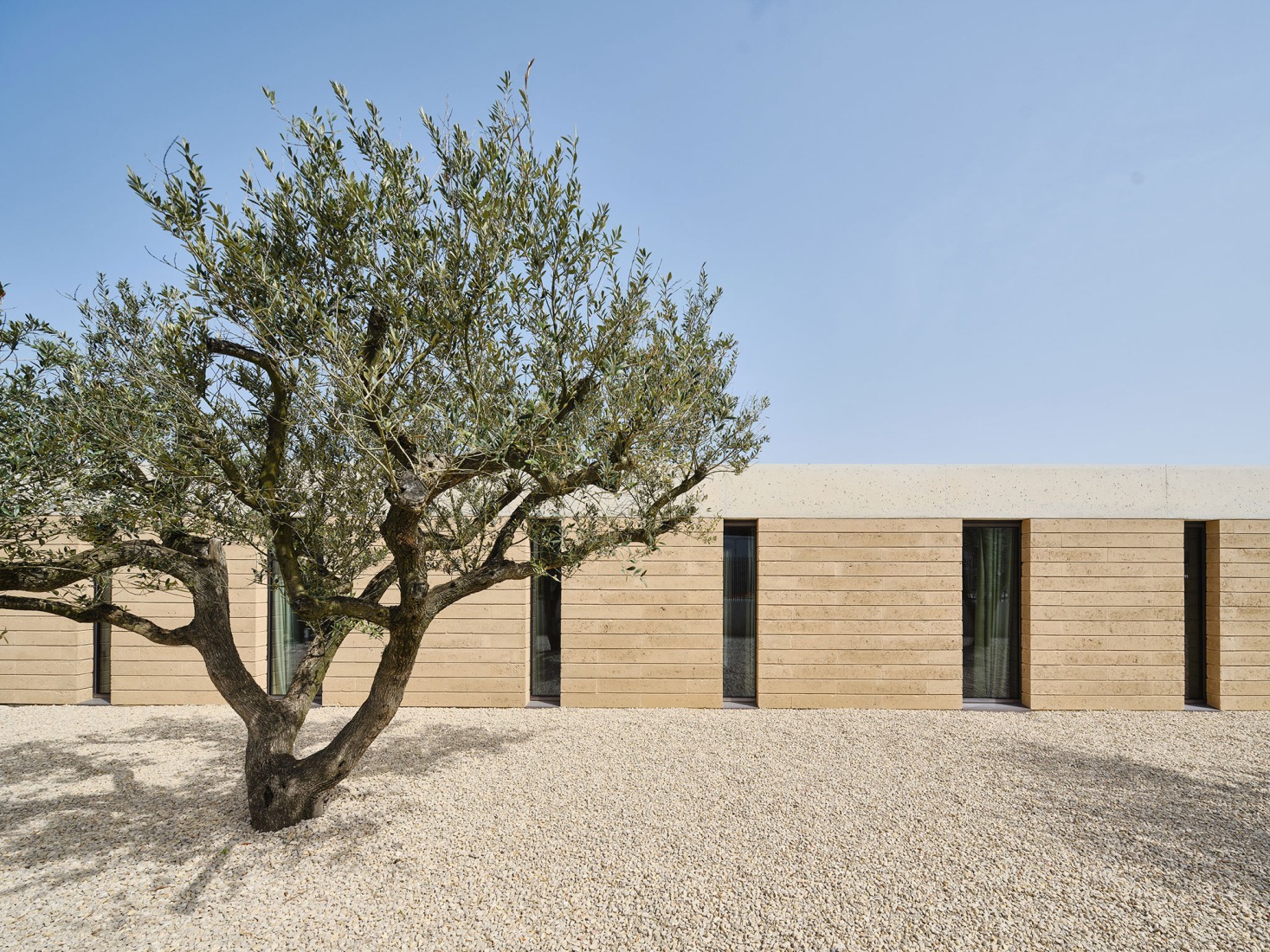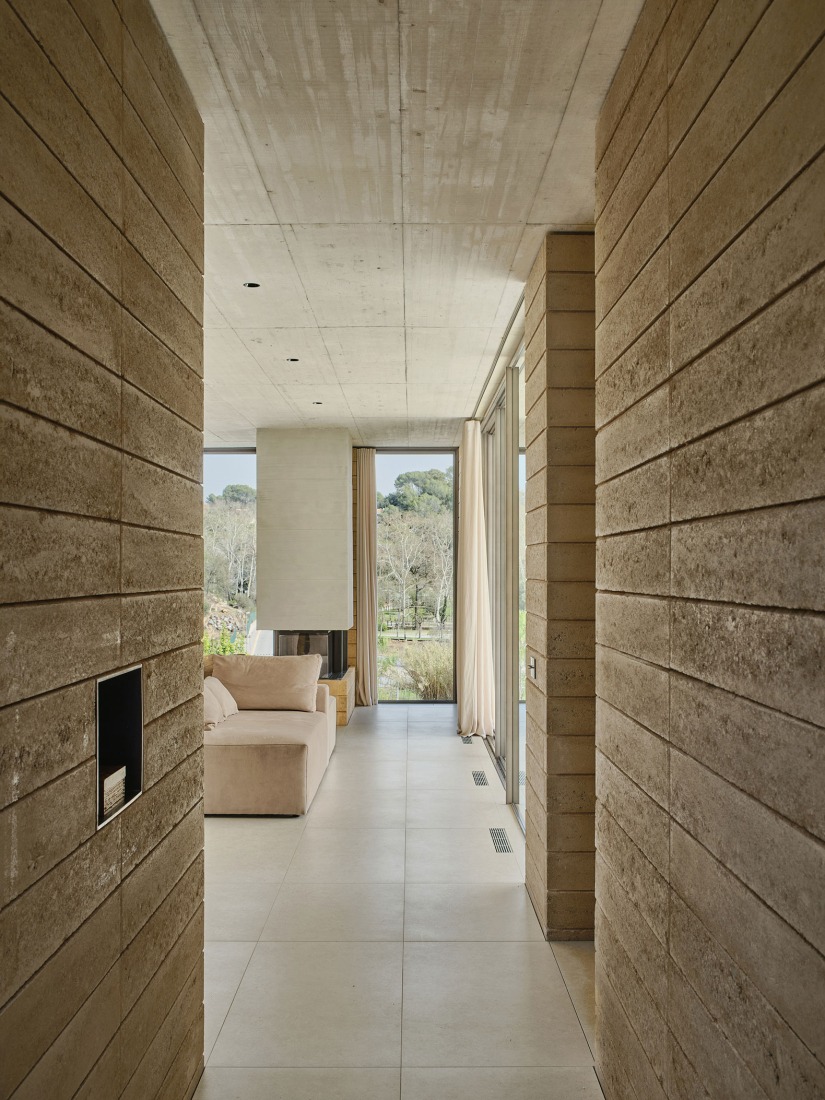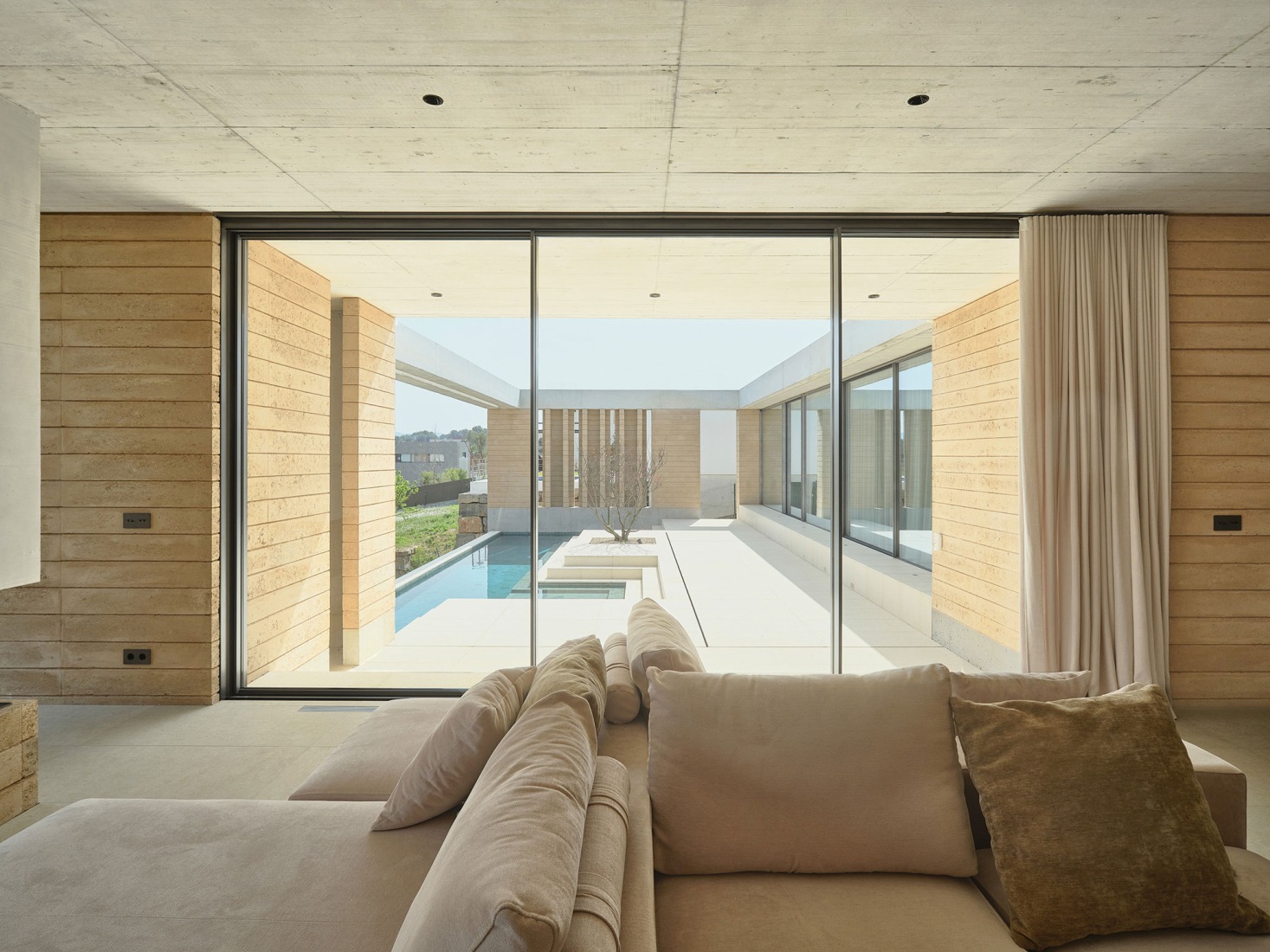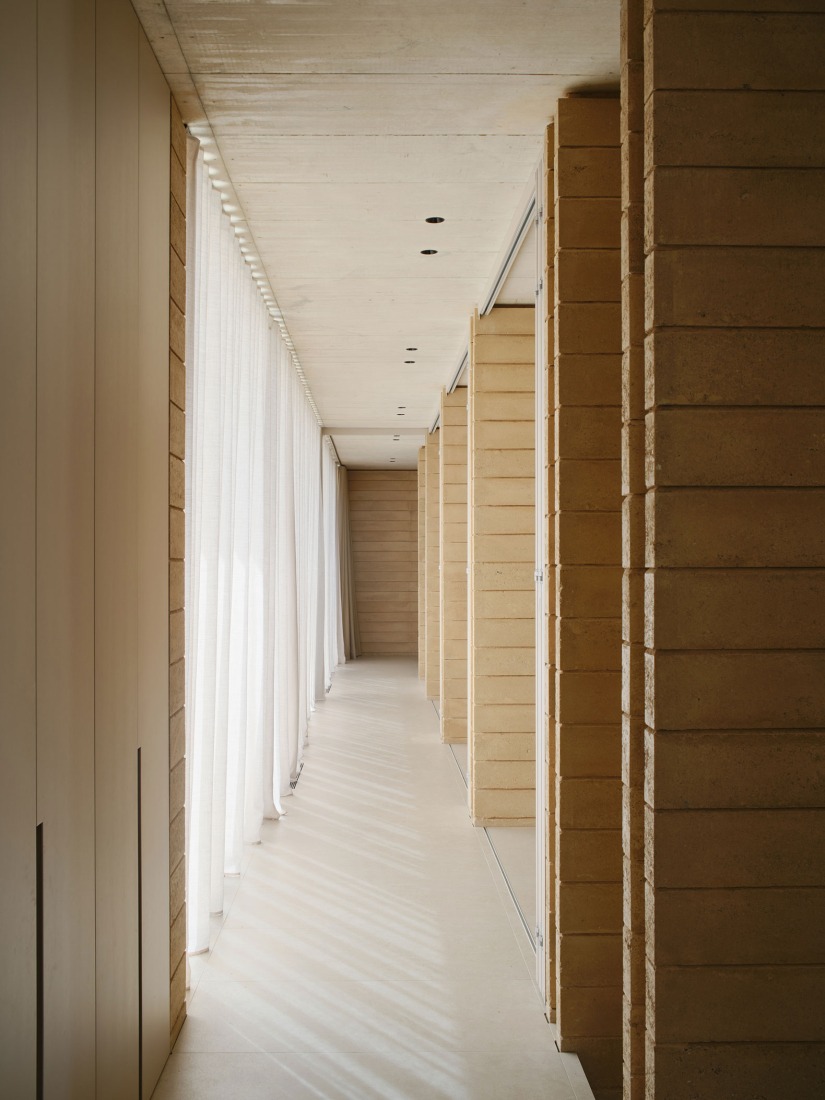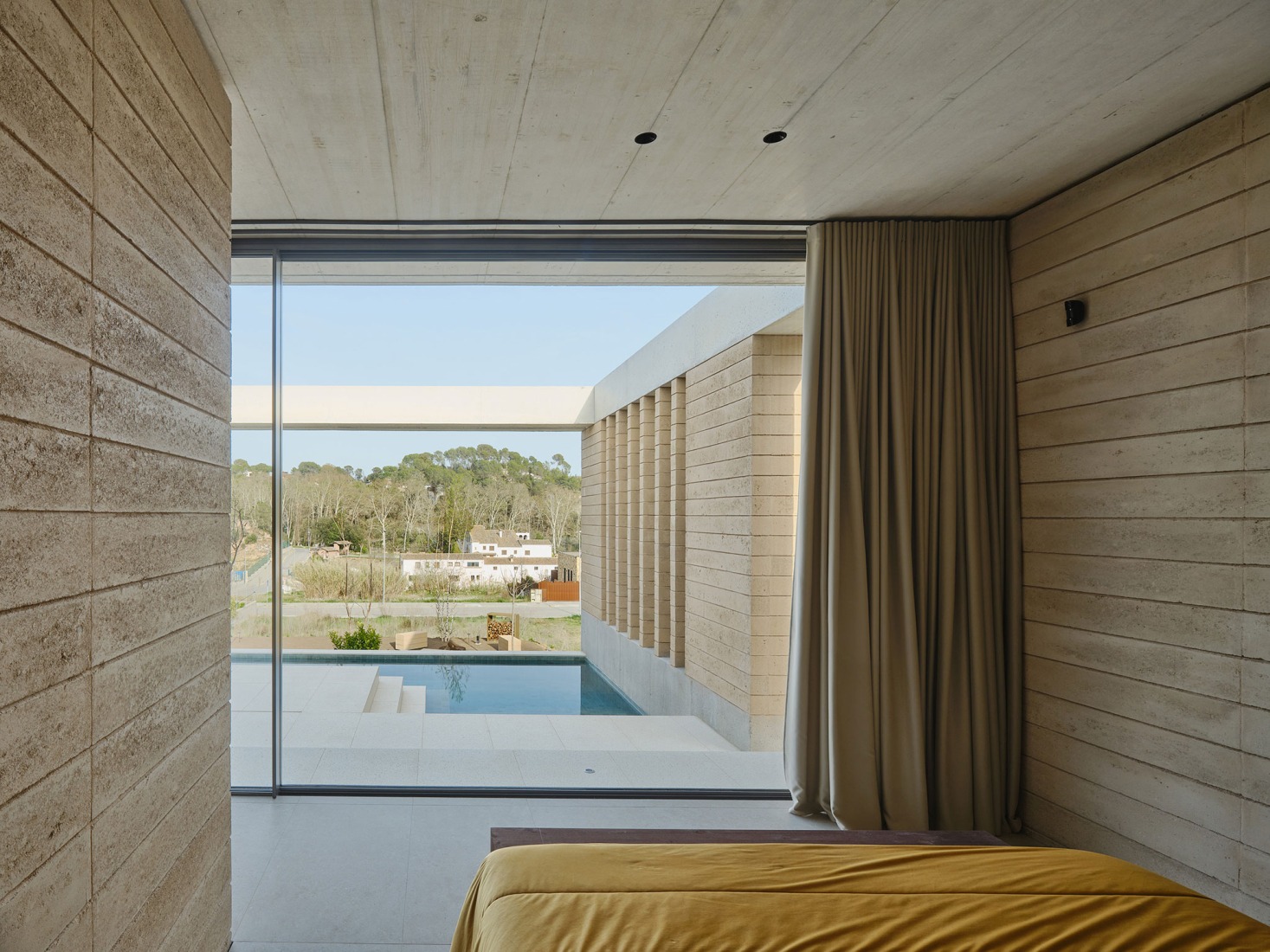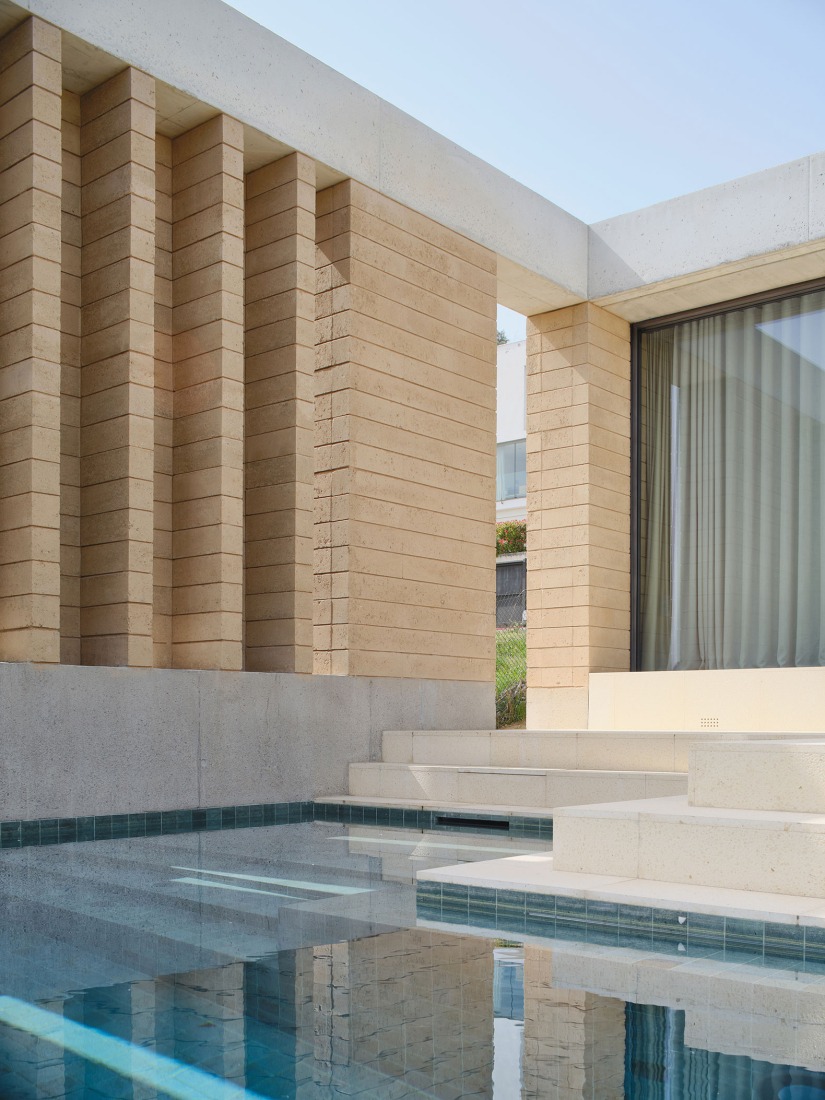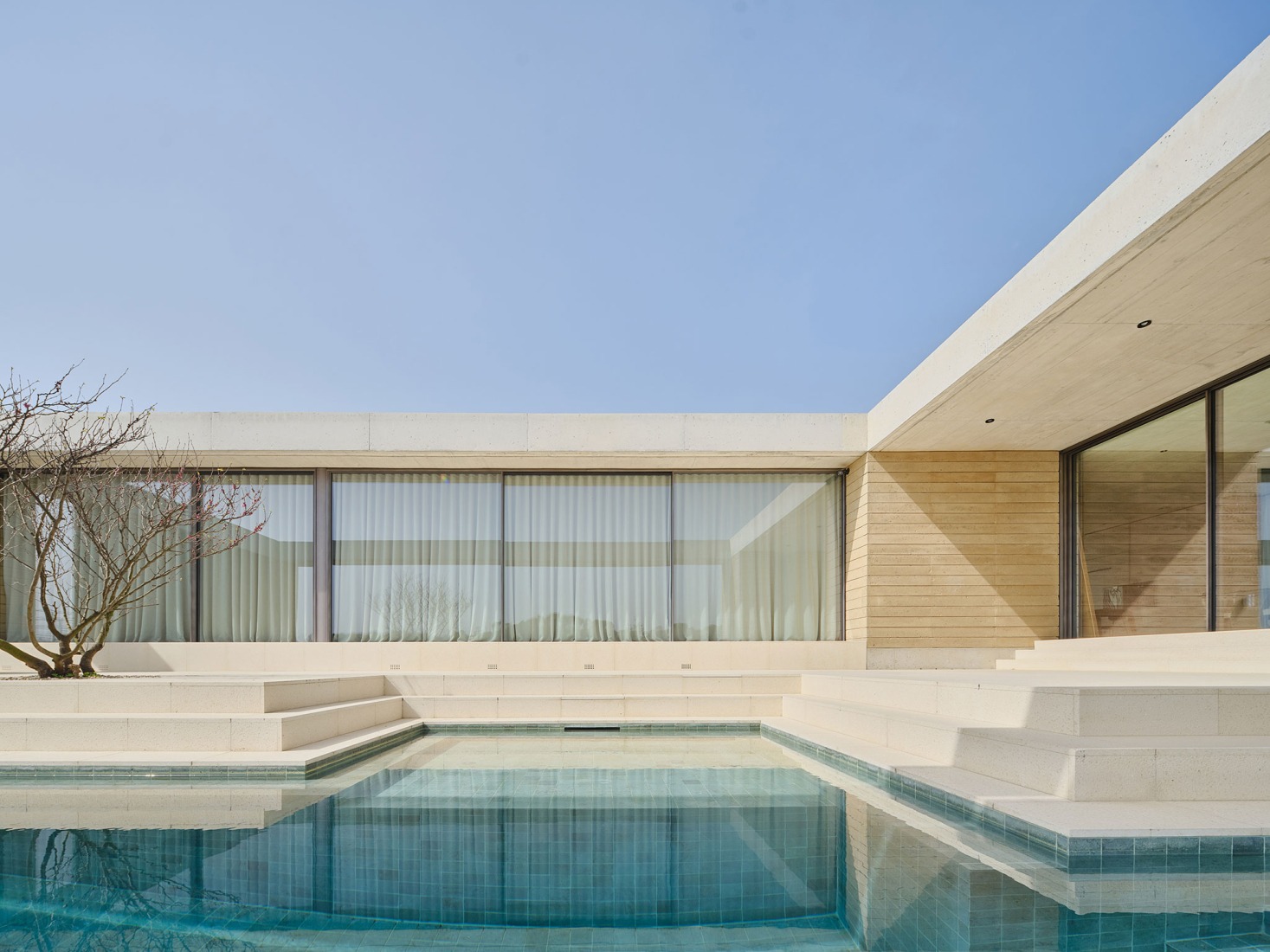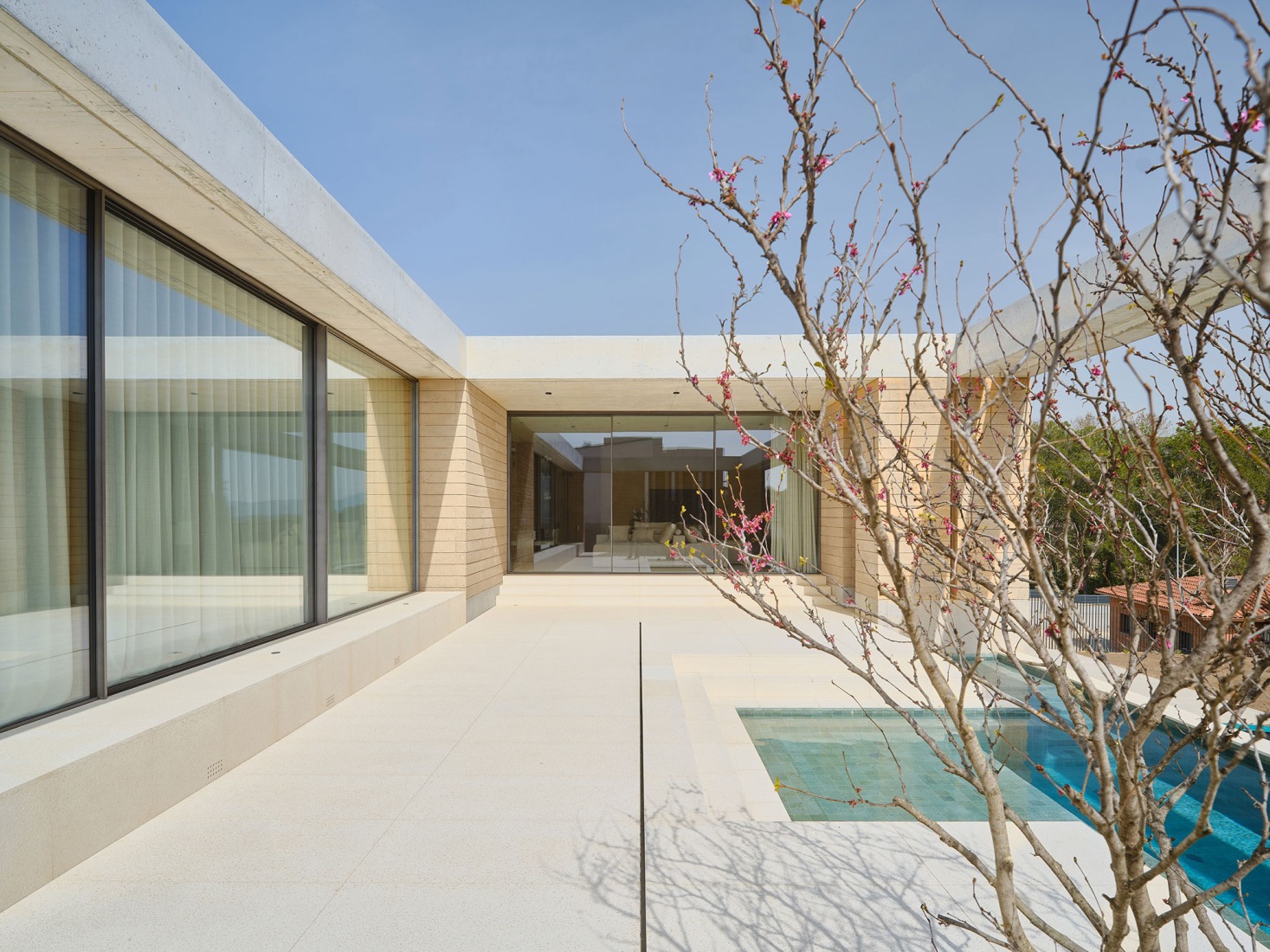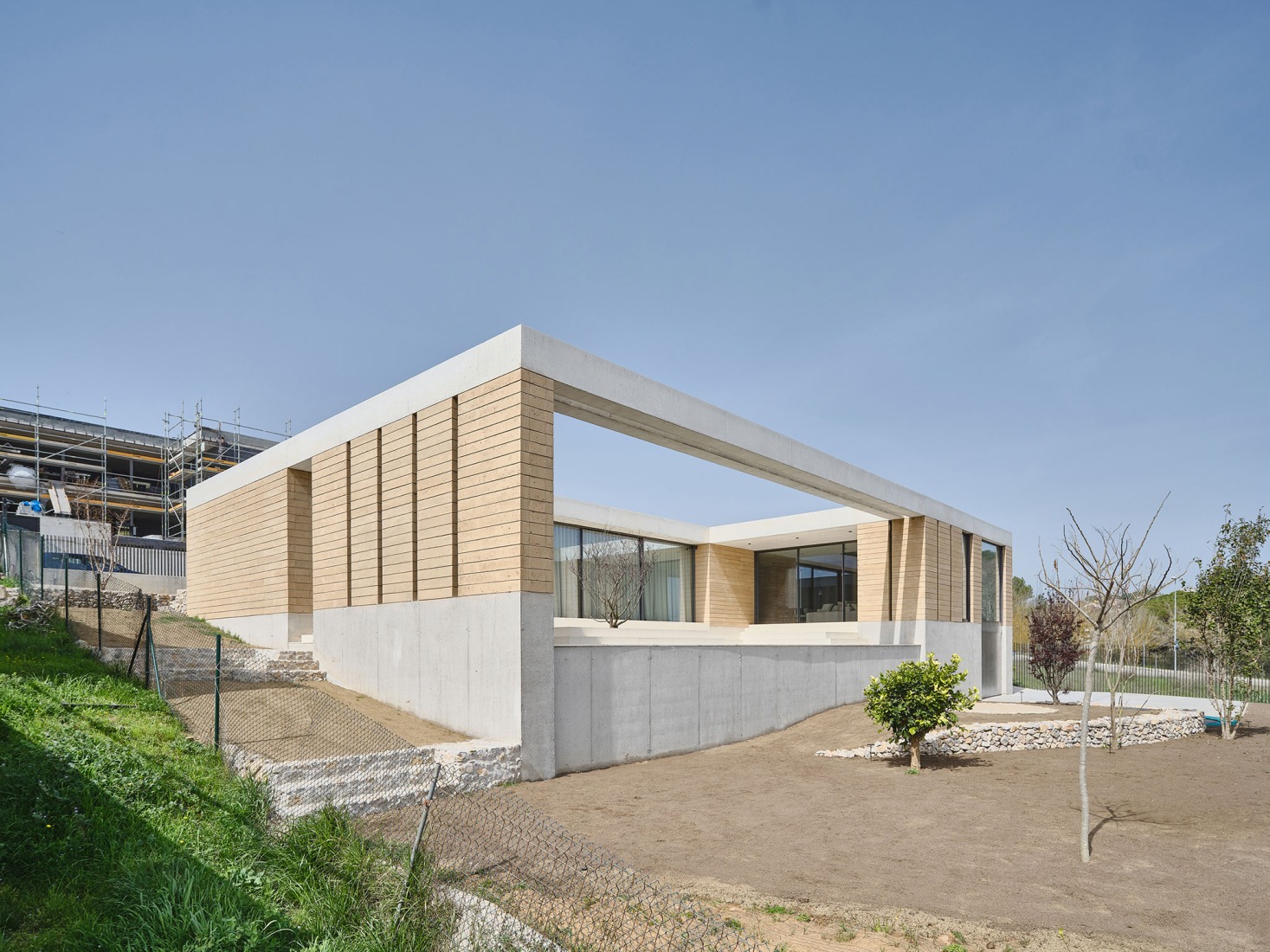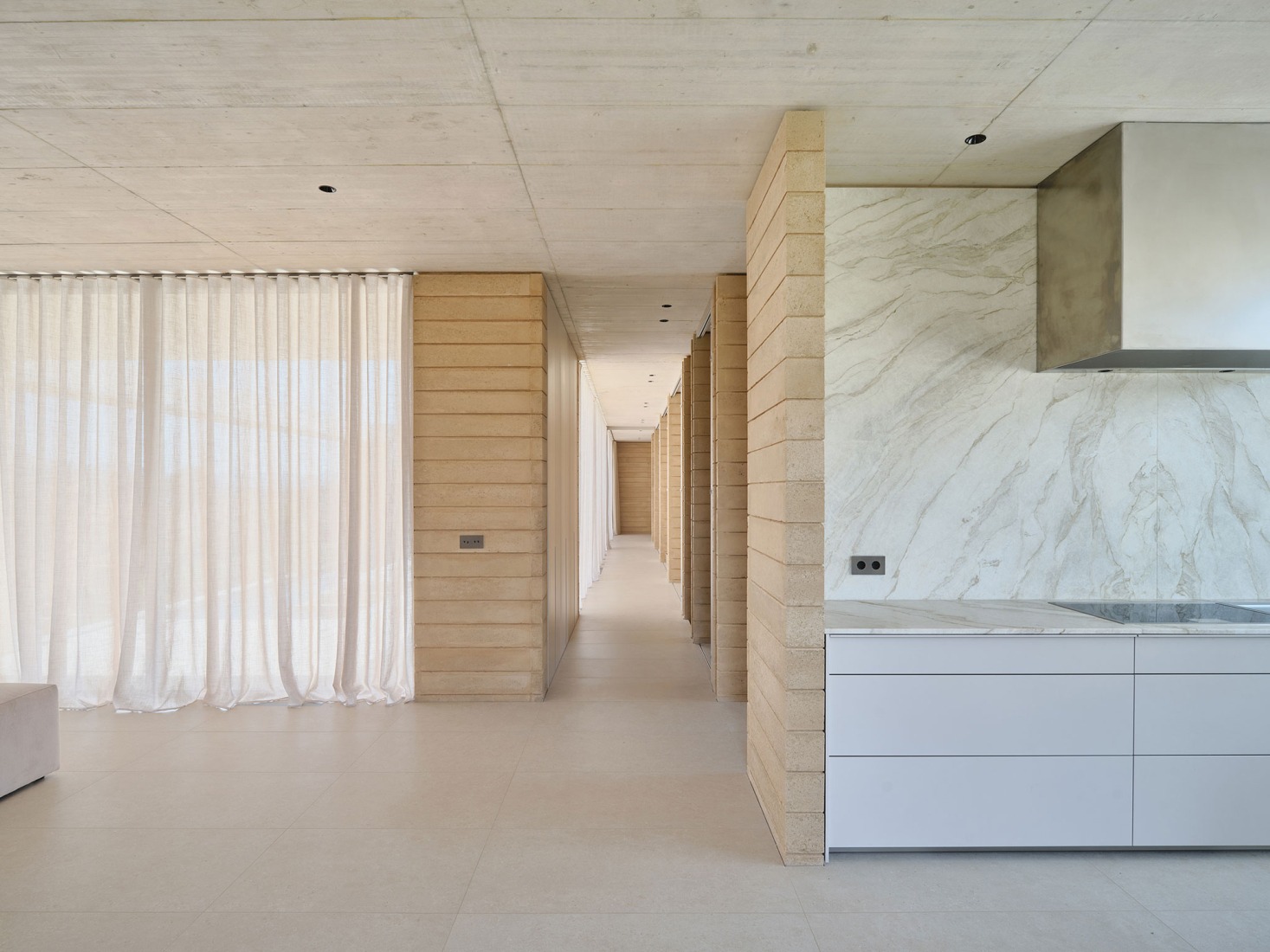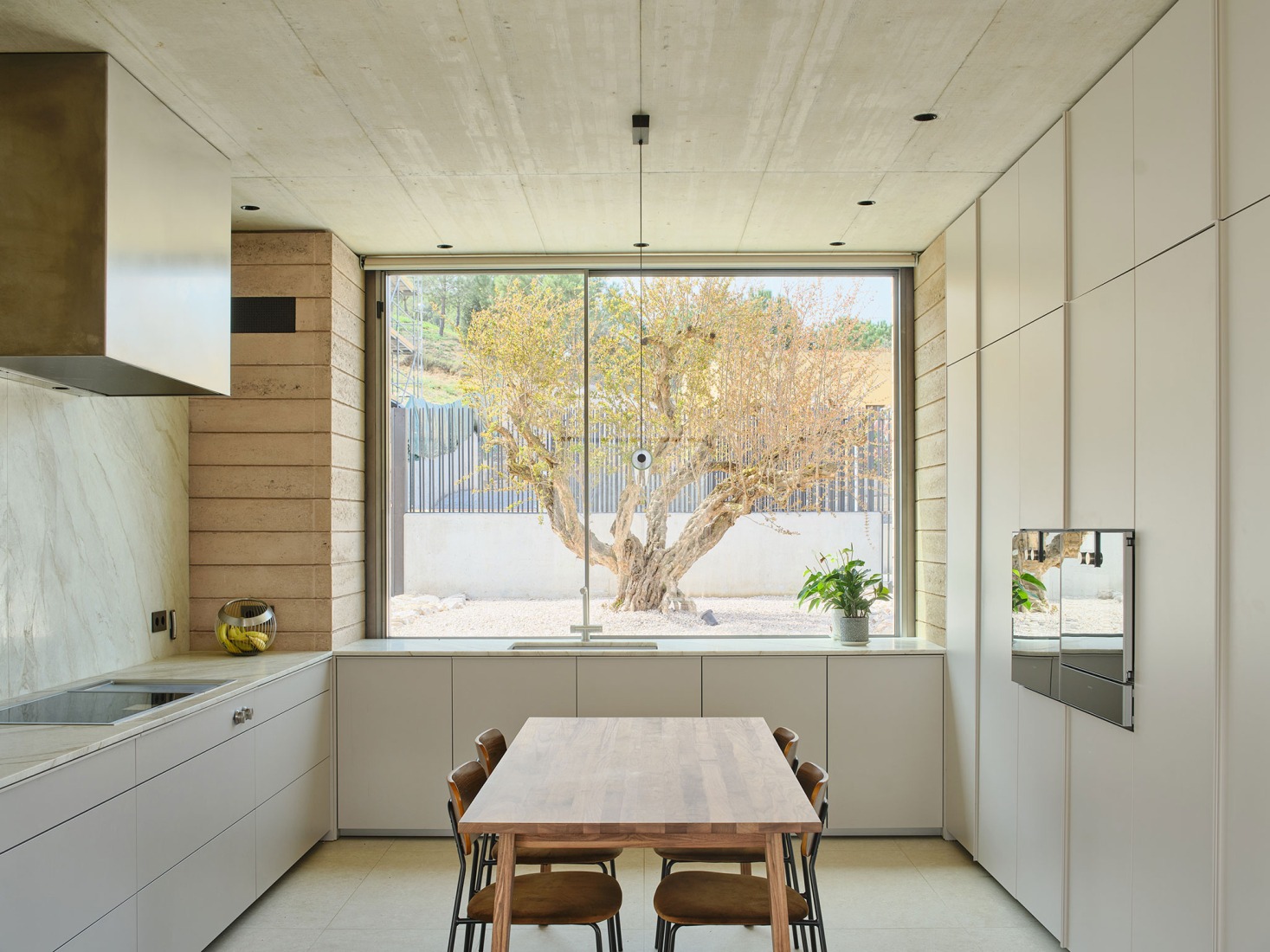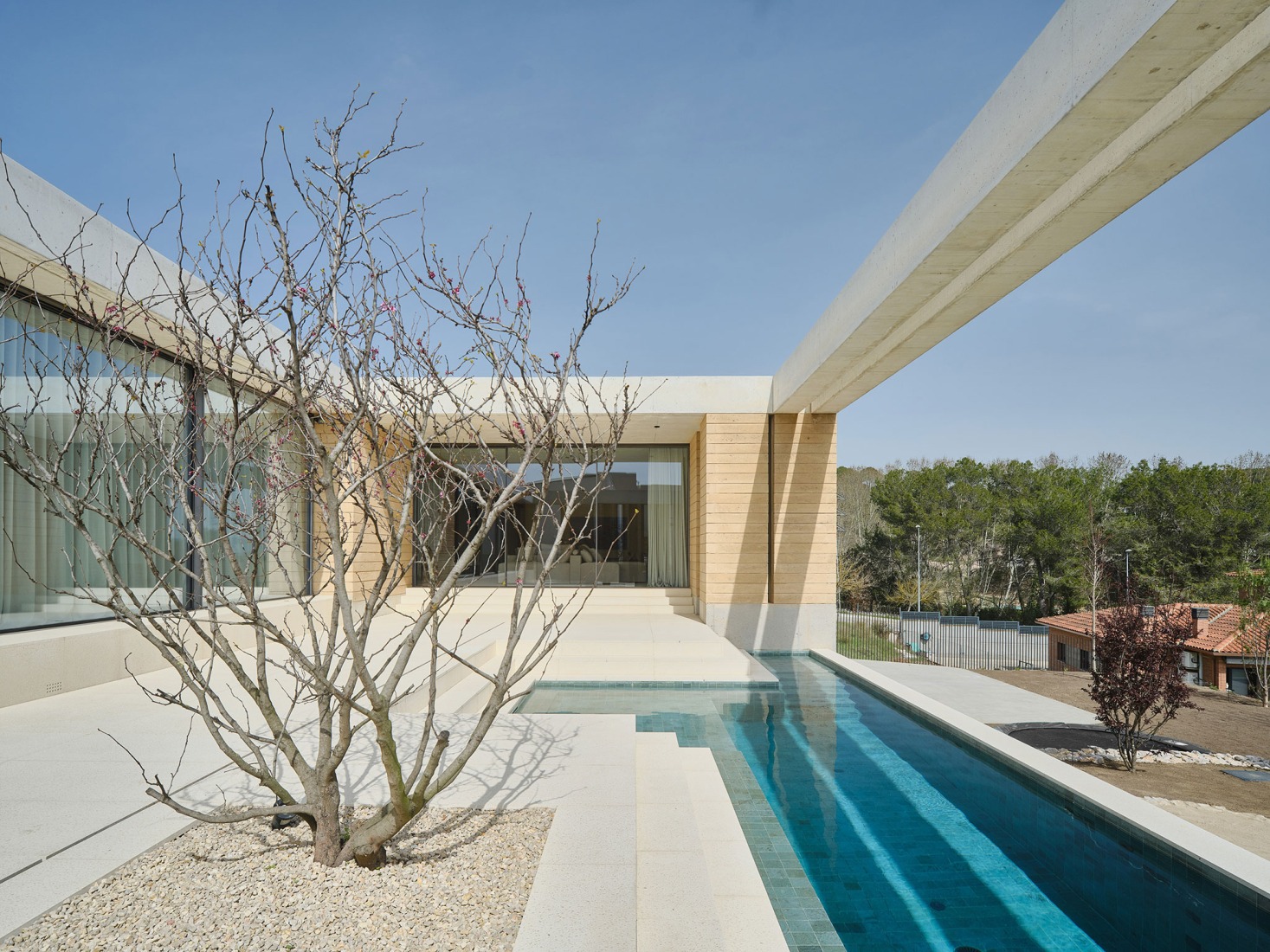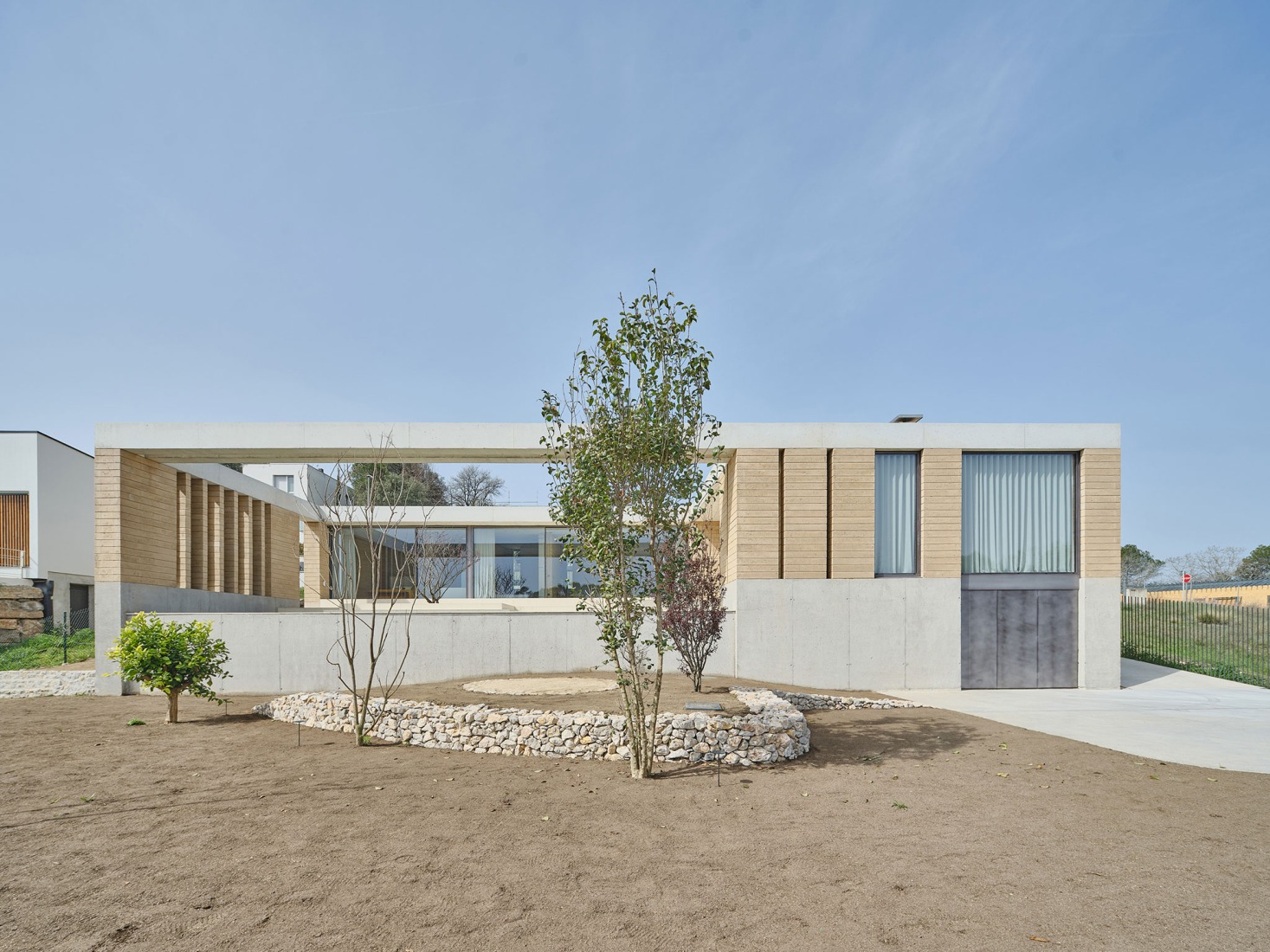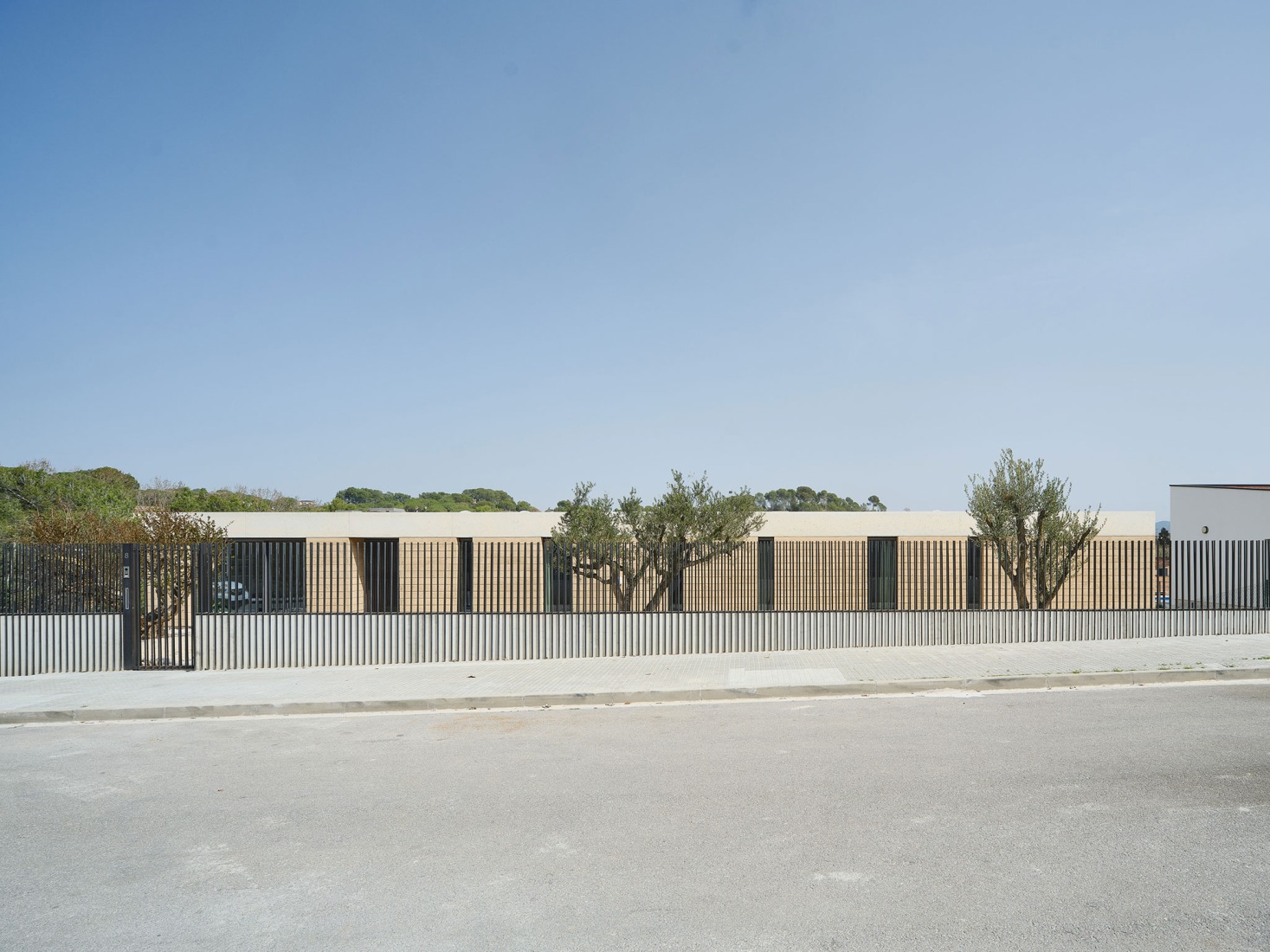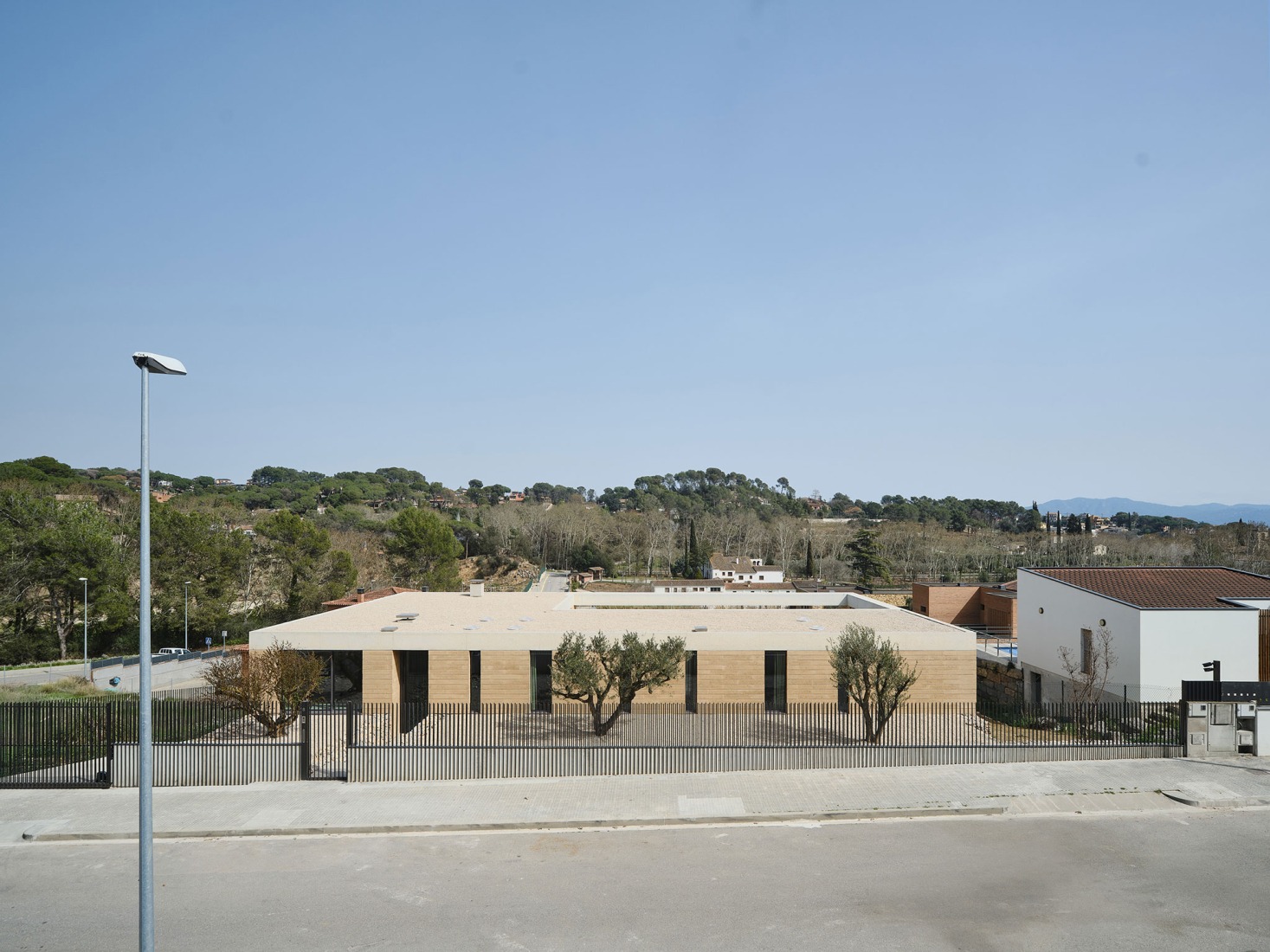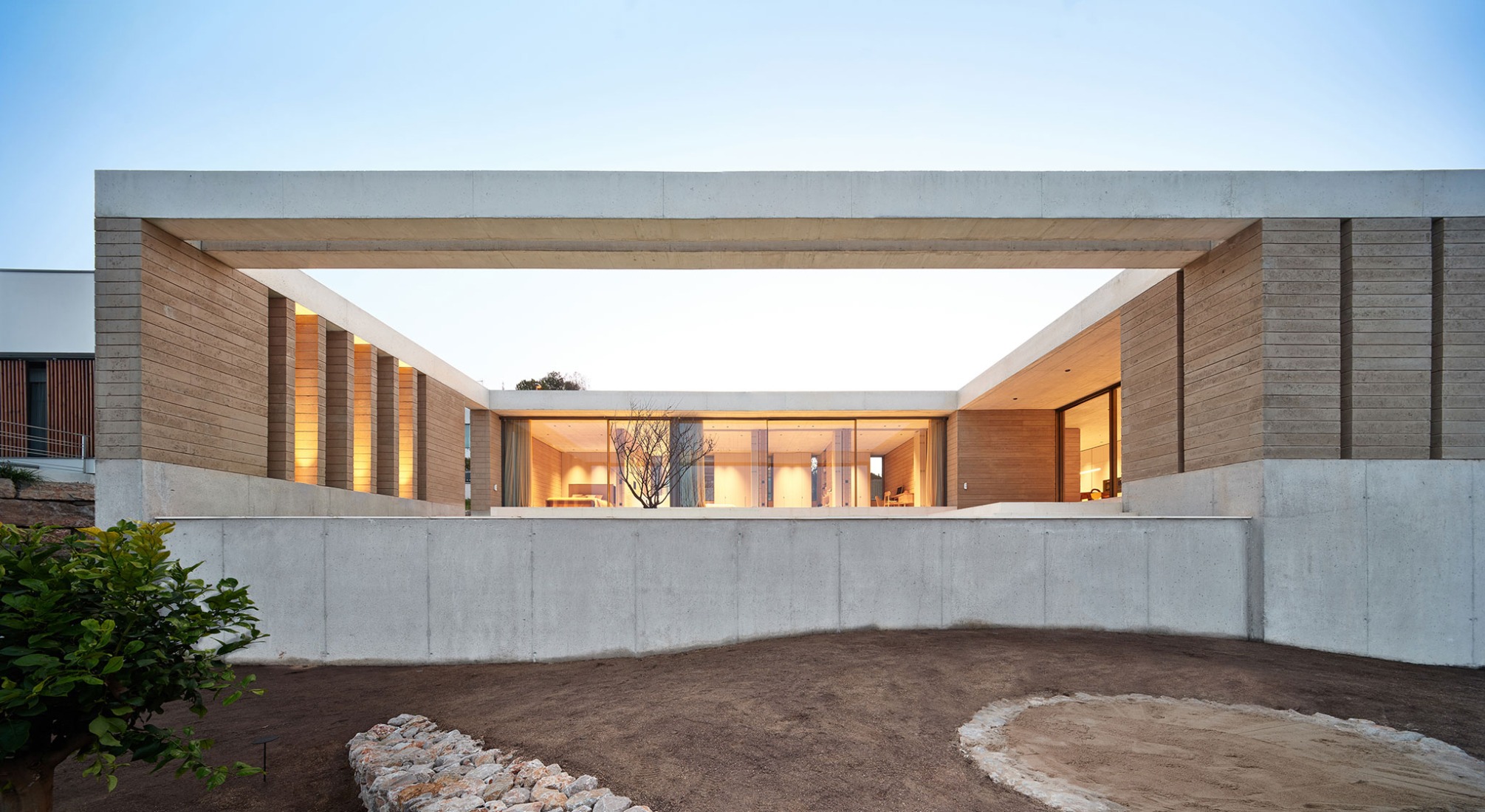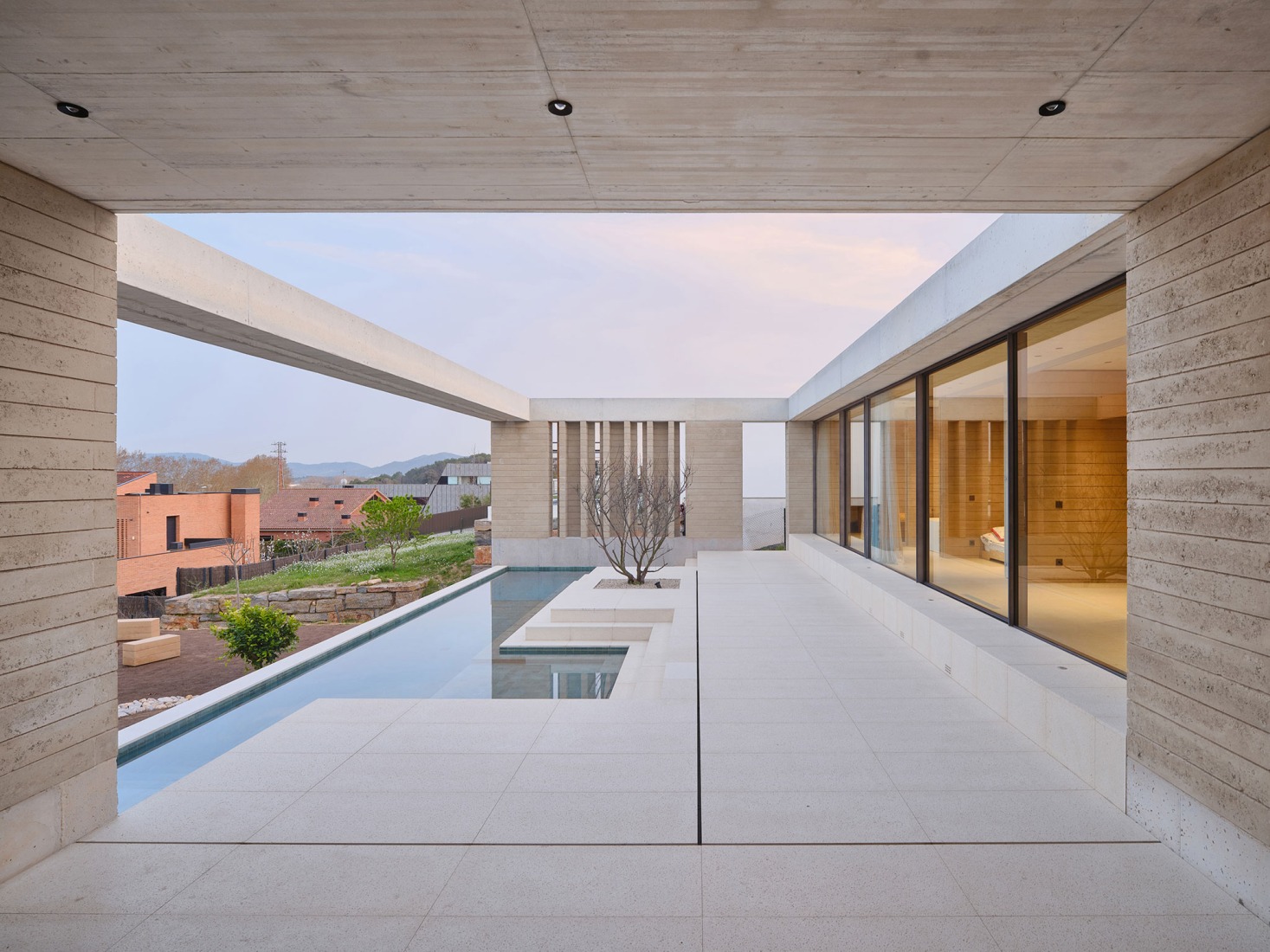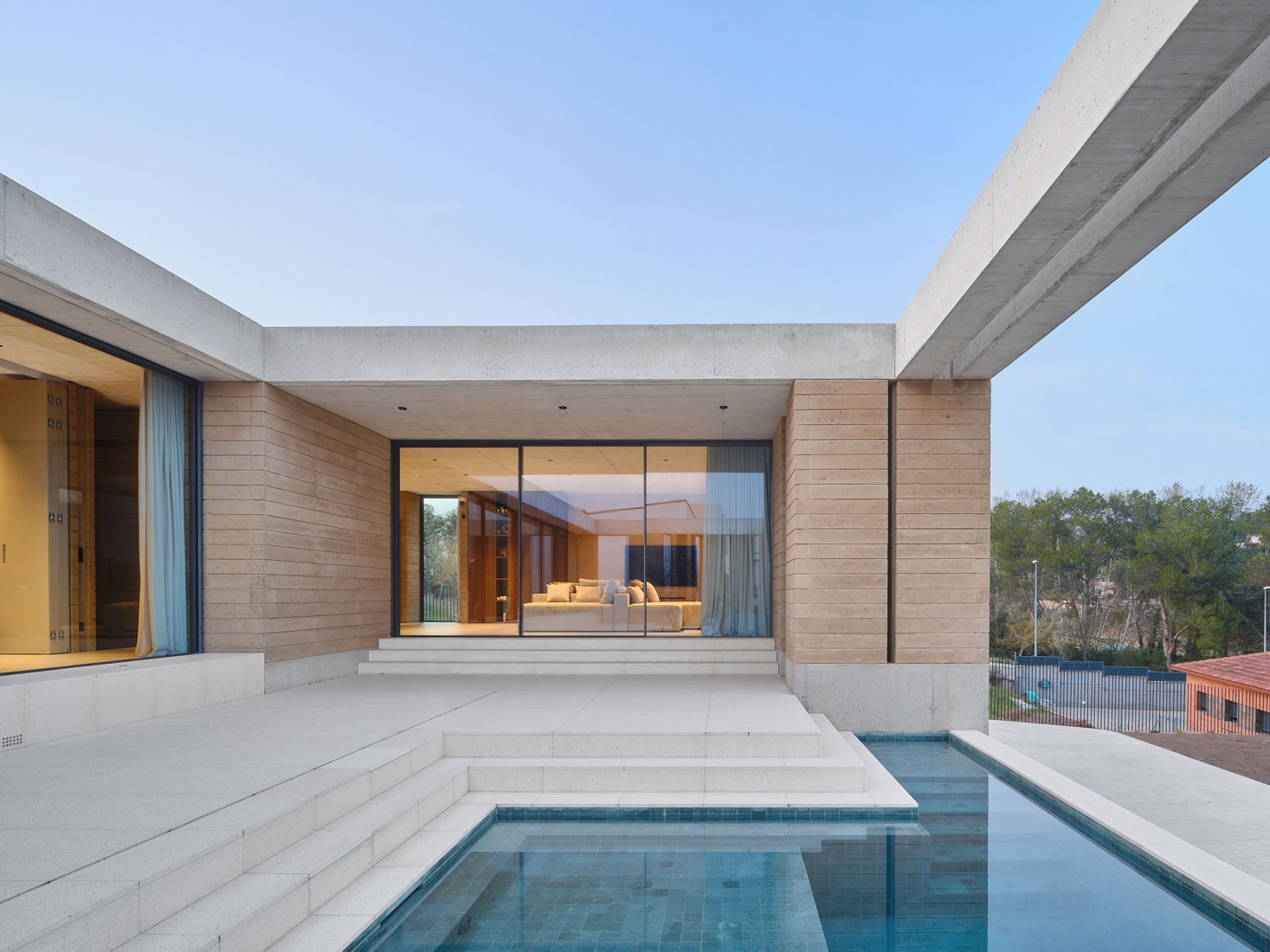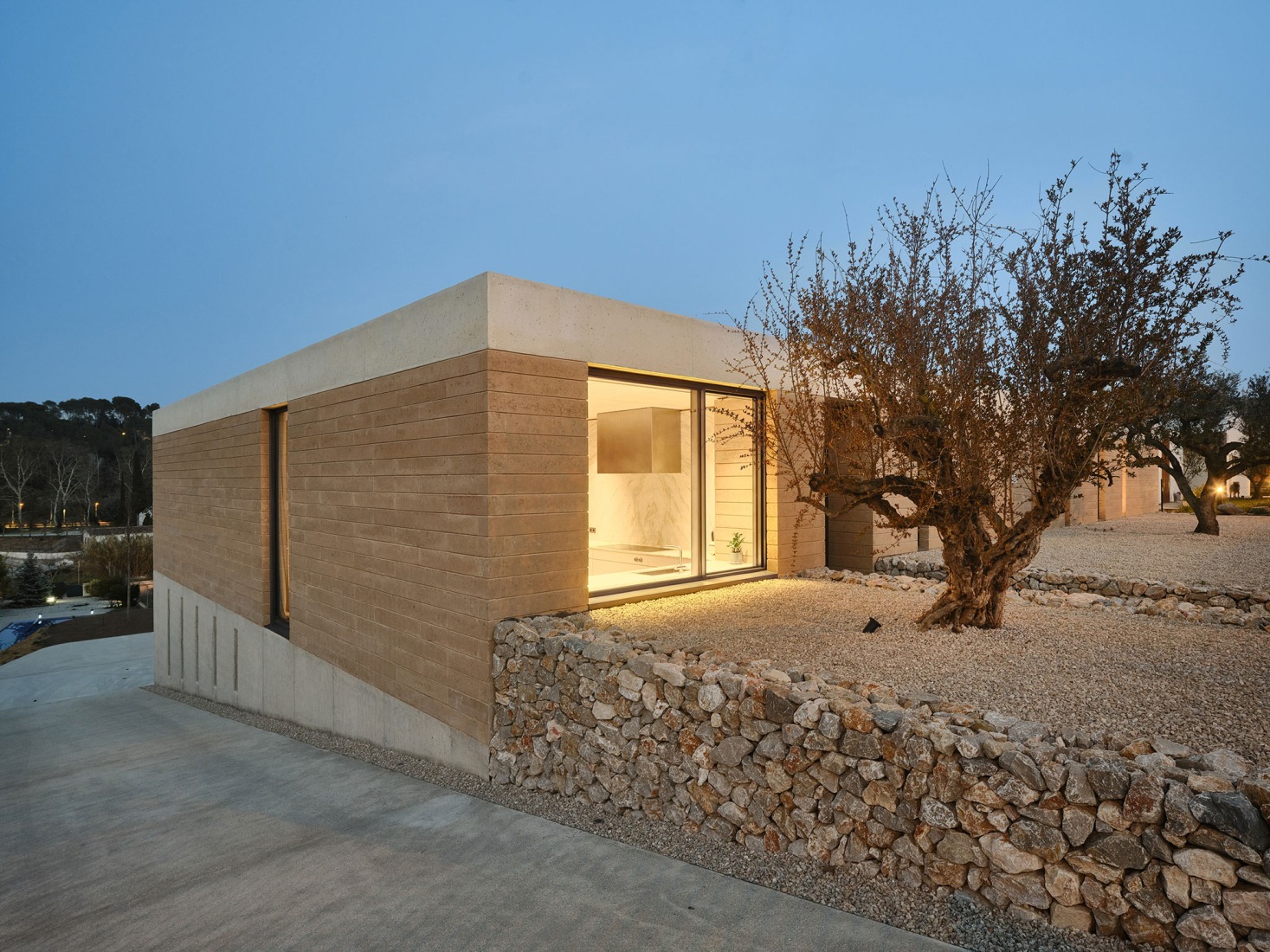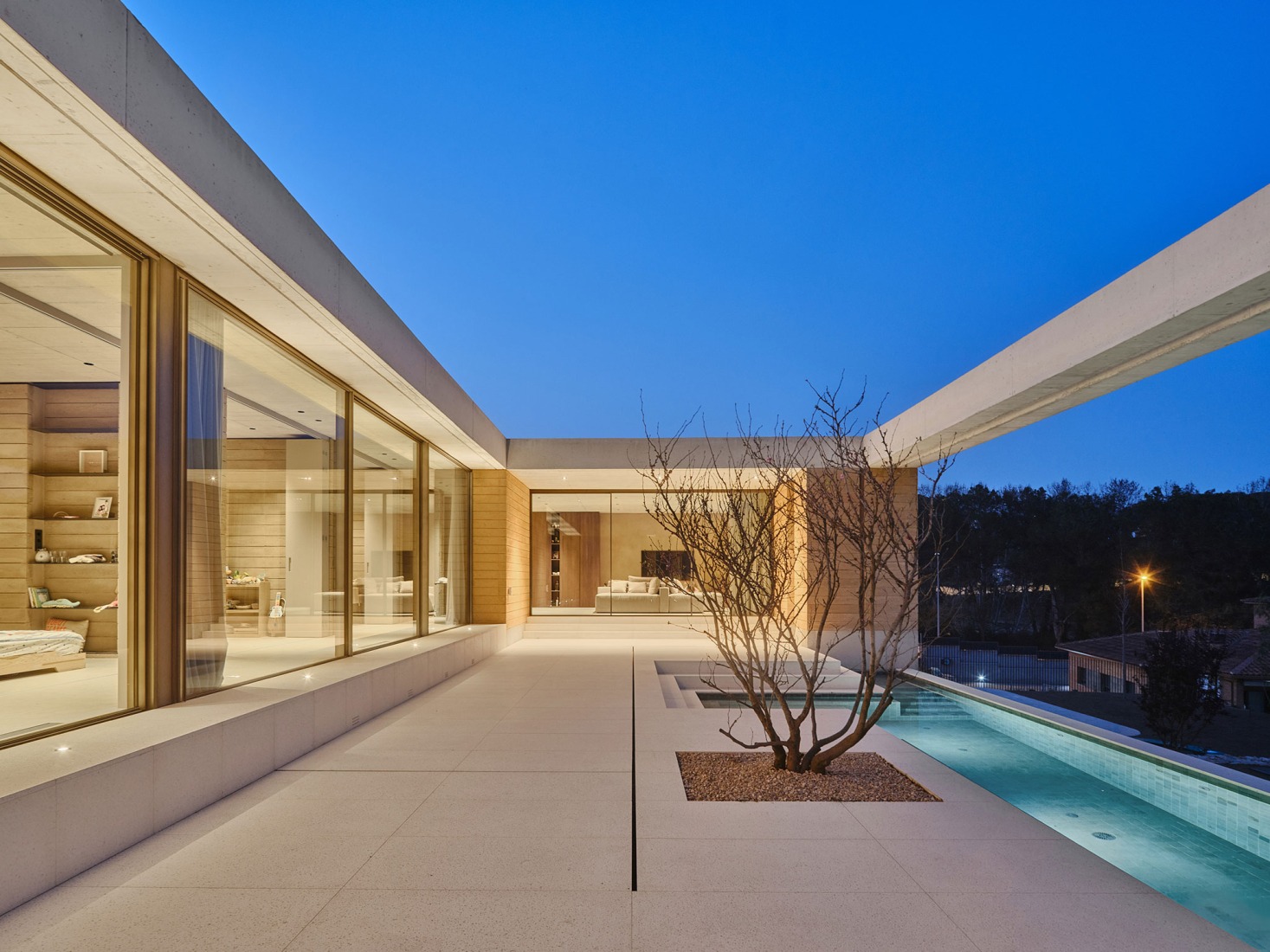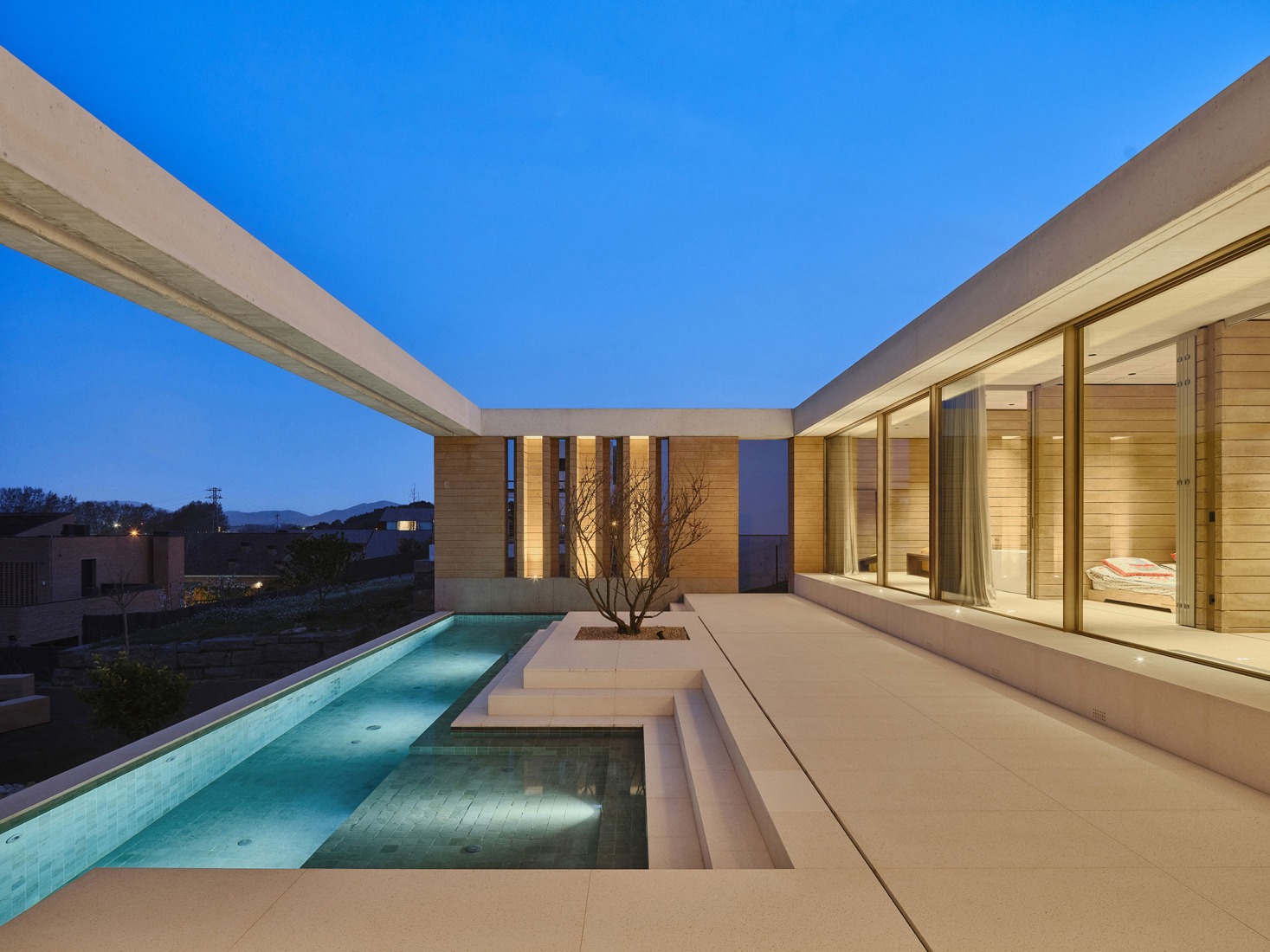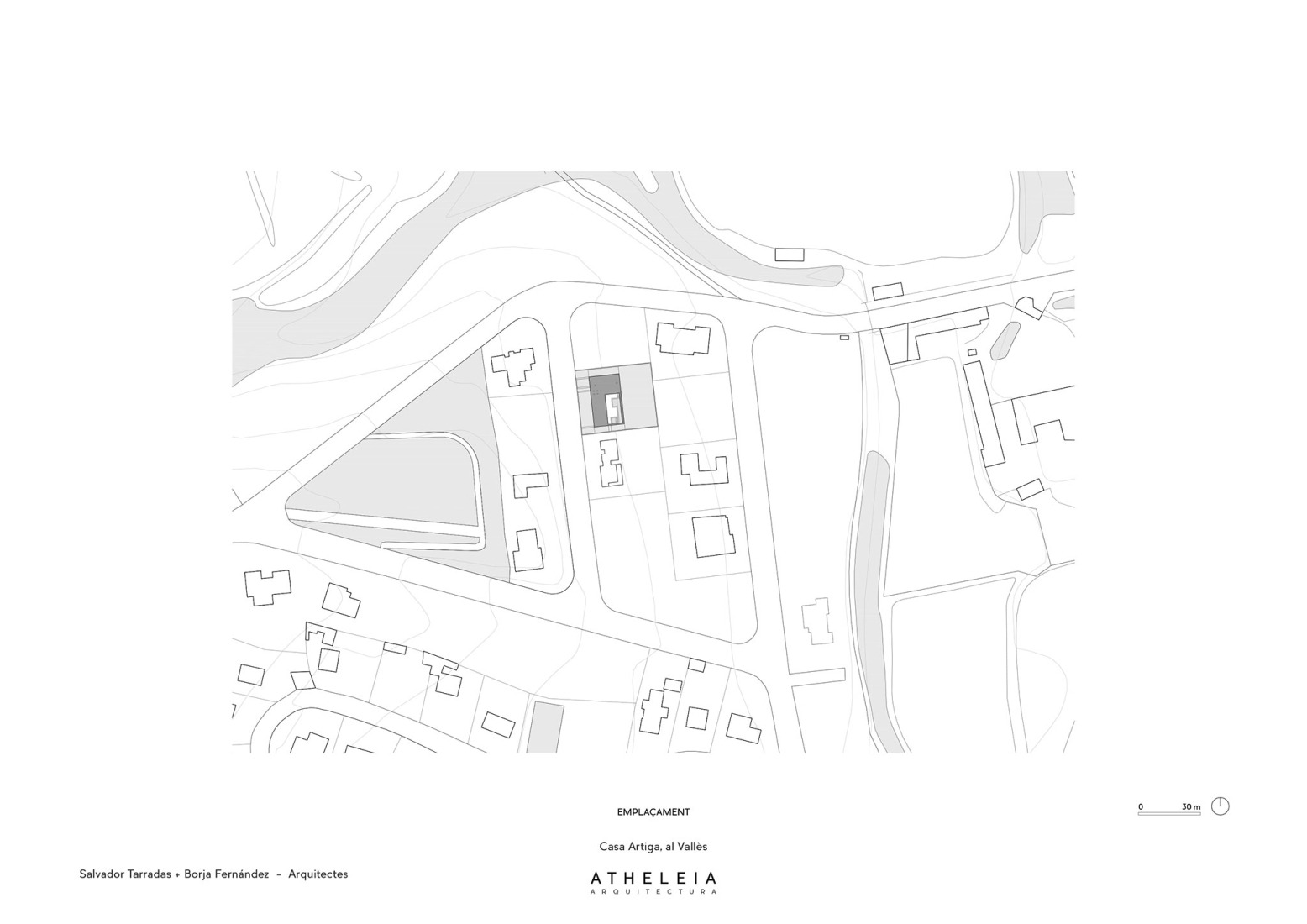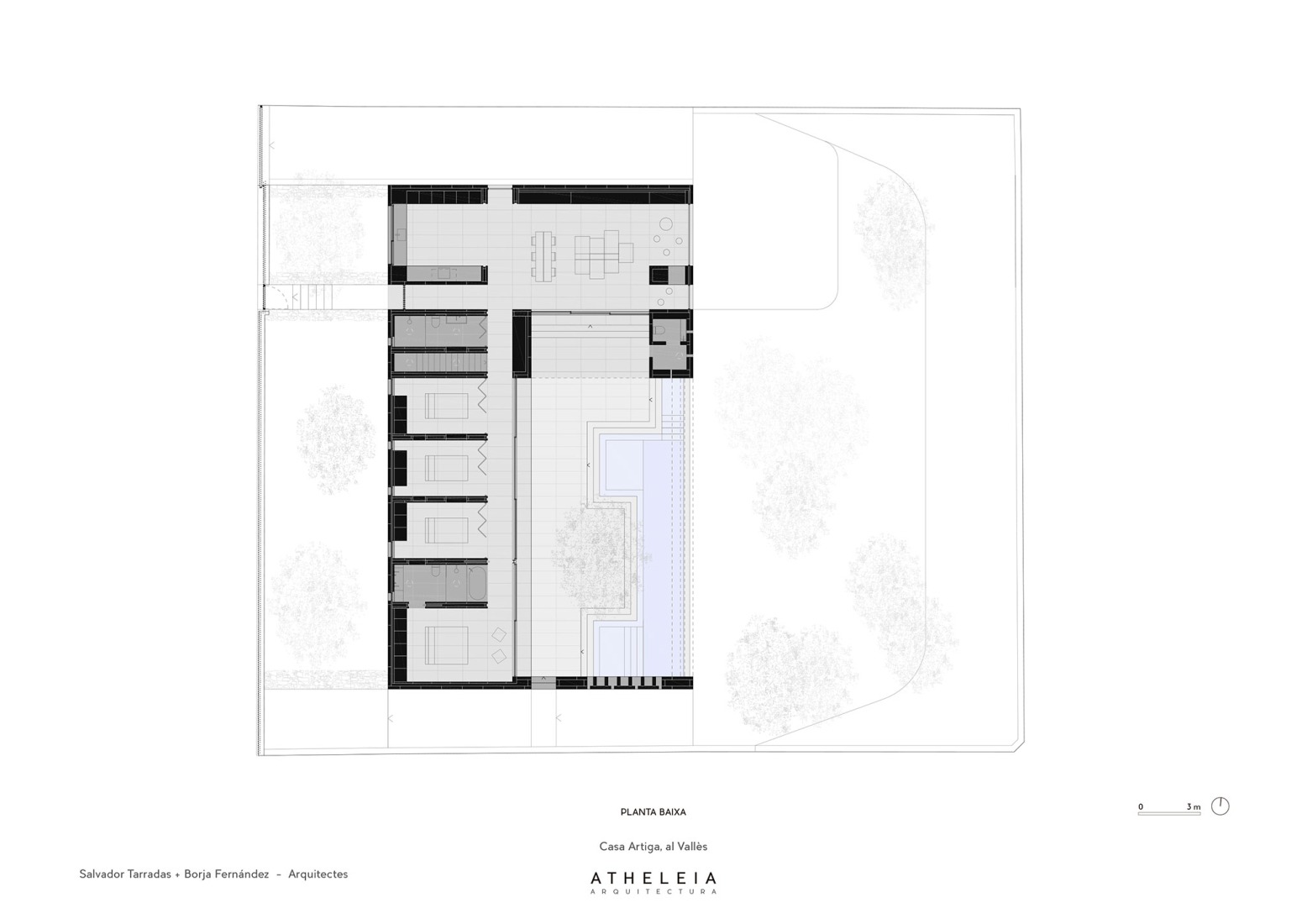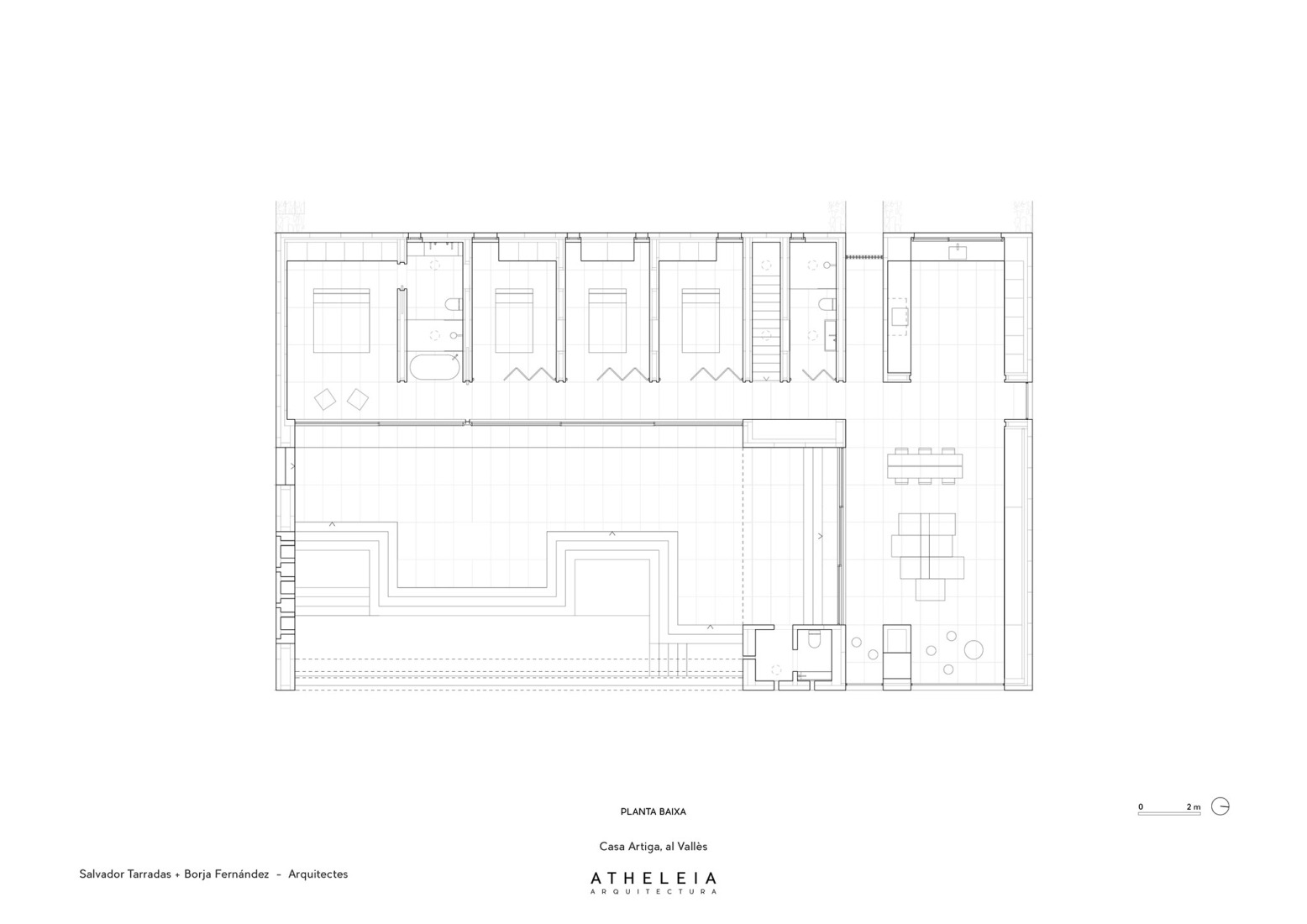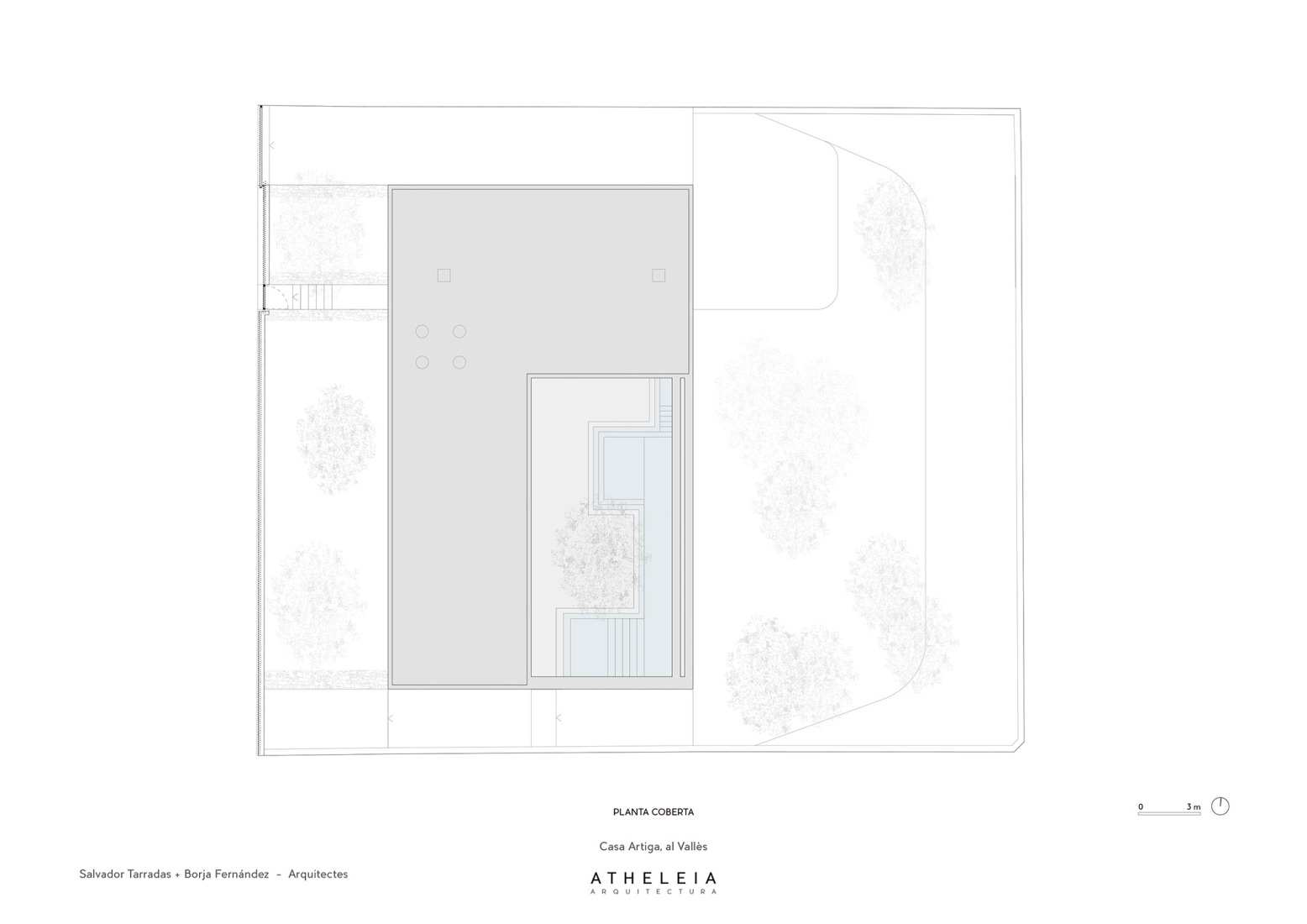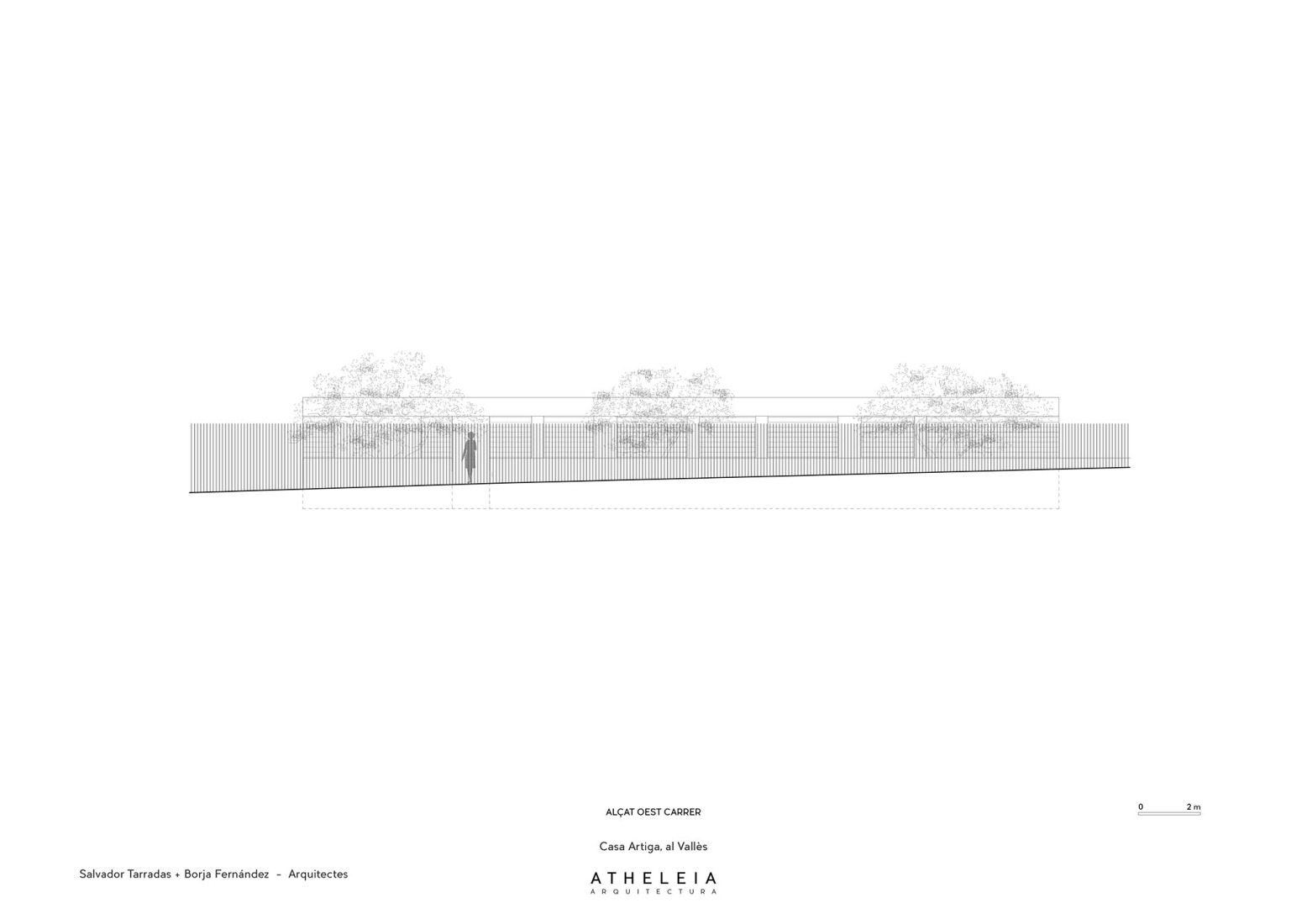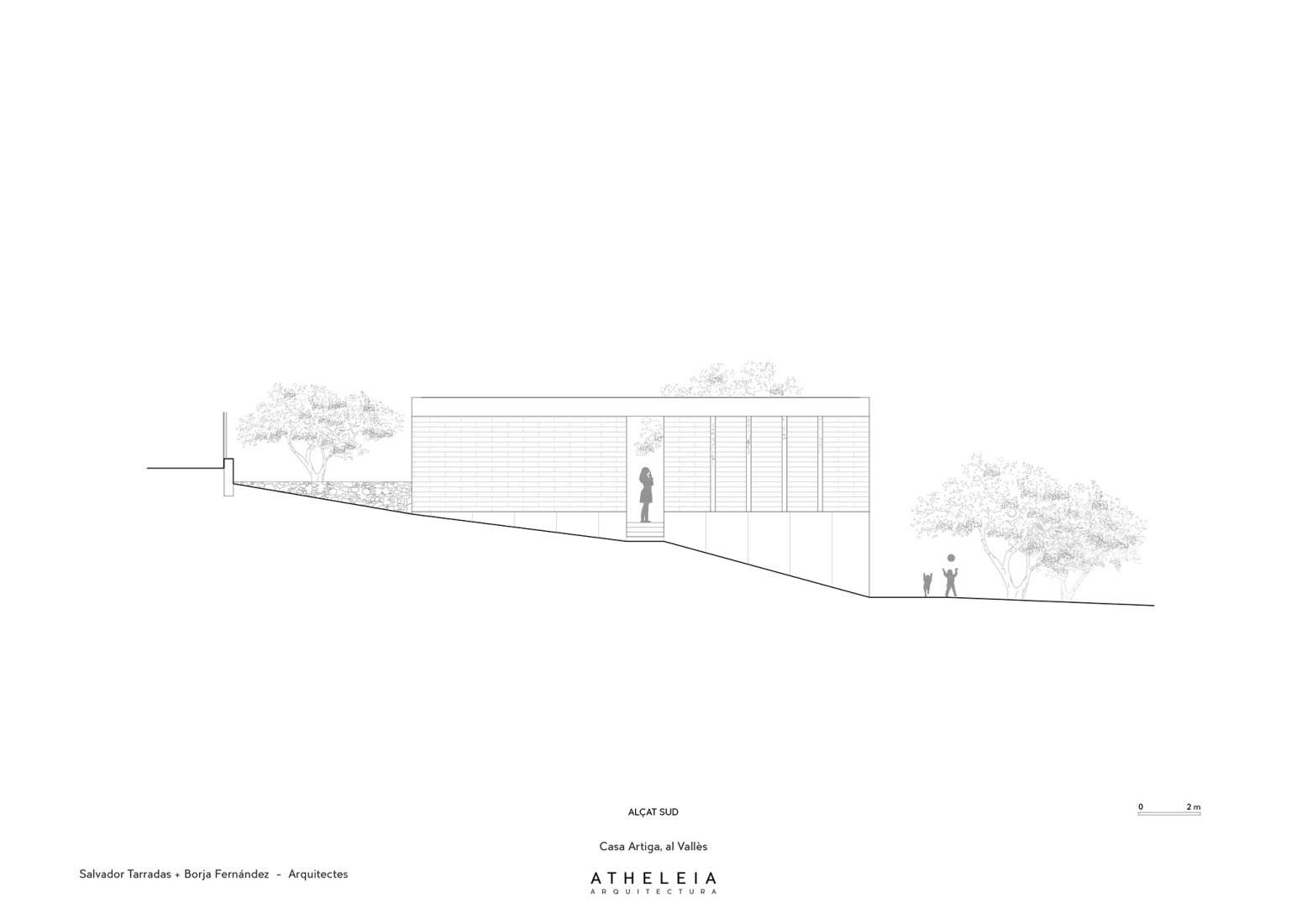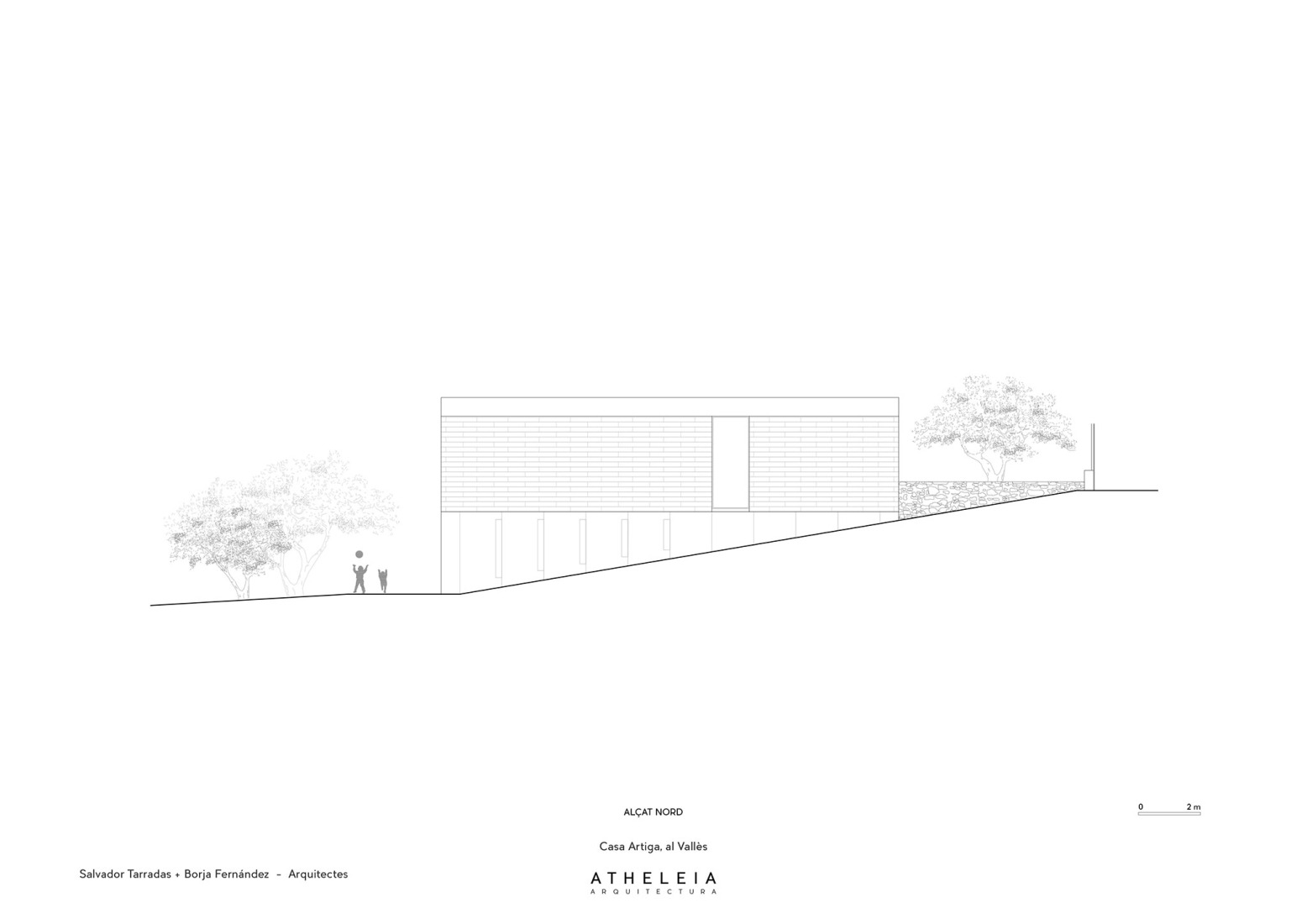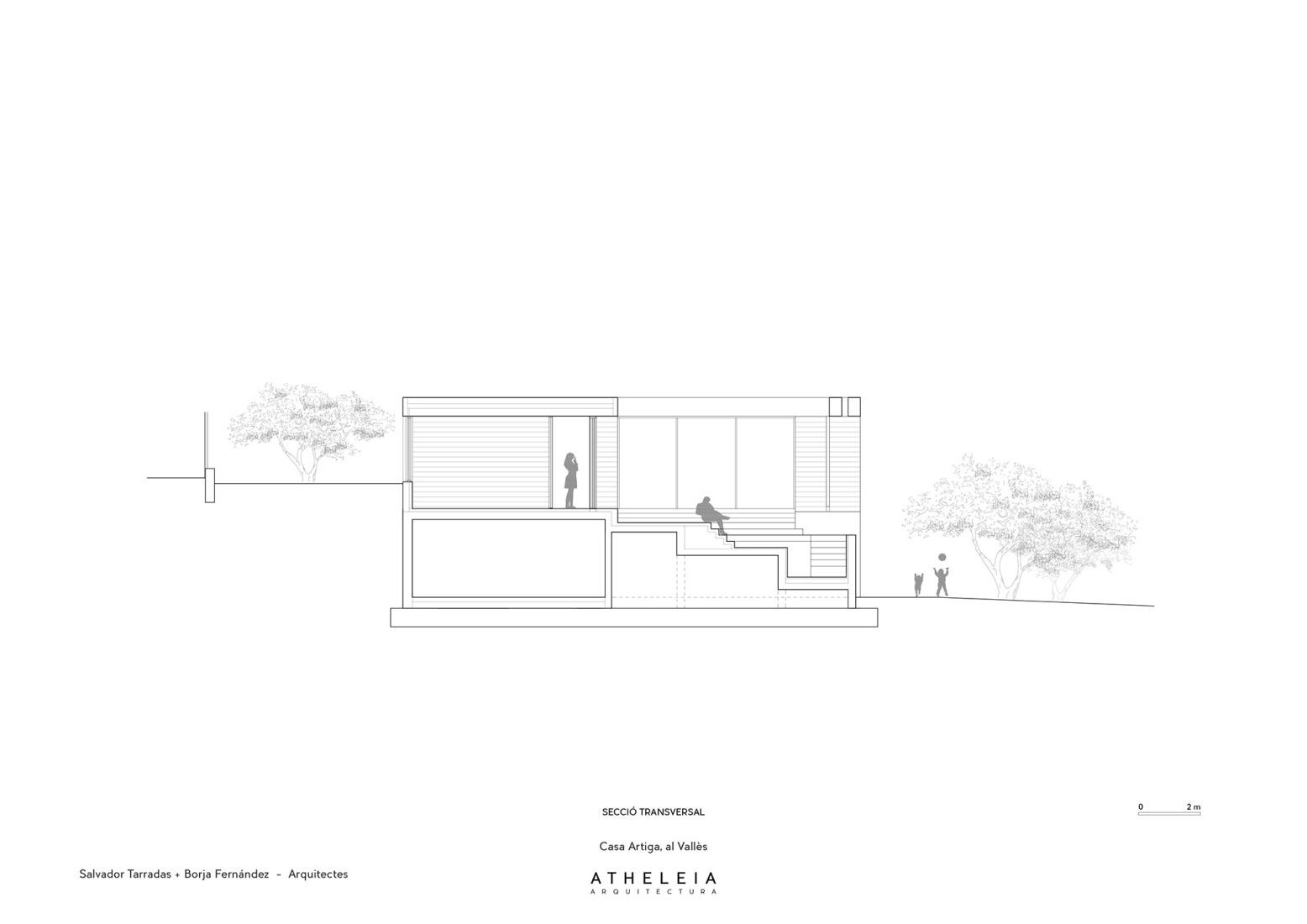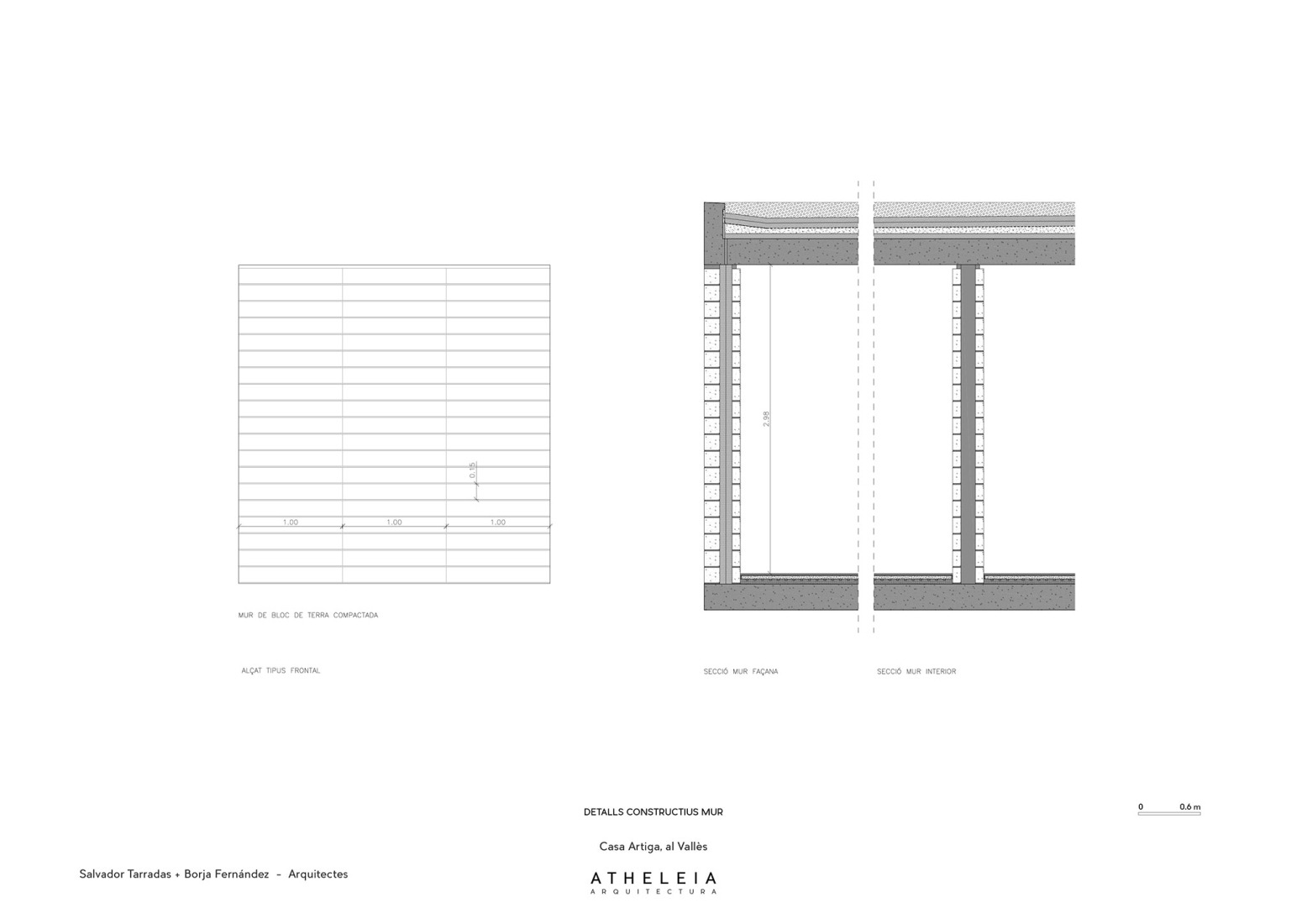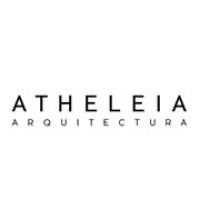The main floor of the house built with load-bearing walls of compacted earth sits on an exposed concrete plinth that allows the containment of earth from the semi-buried lower level dedicated to services. The building is filled with a large slab of exposed concrete that occupies the entire floor except the space occupied by the pool patio where a space is opened to configure an outdoor room.
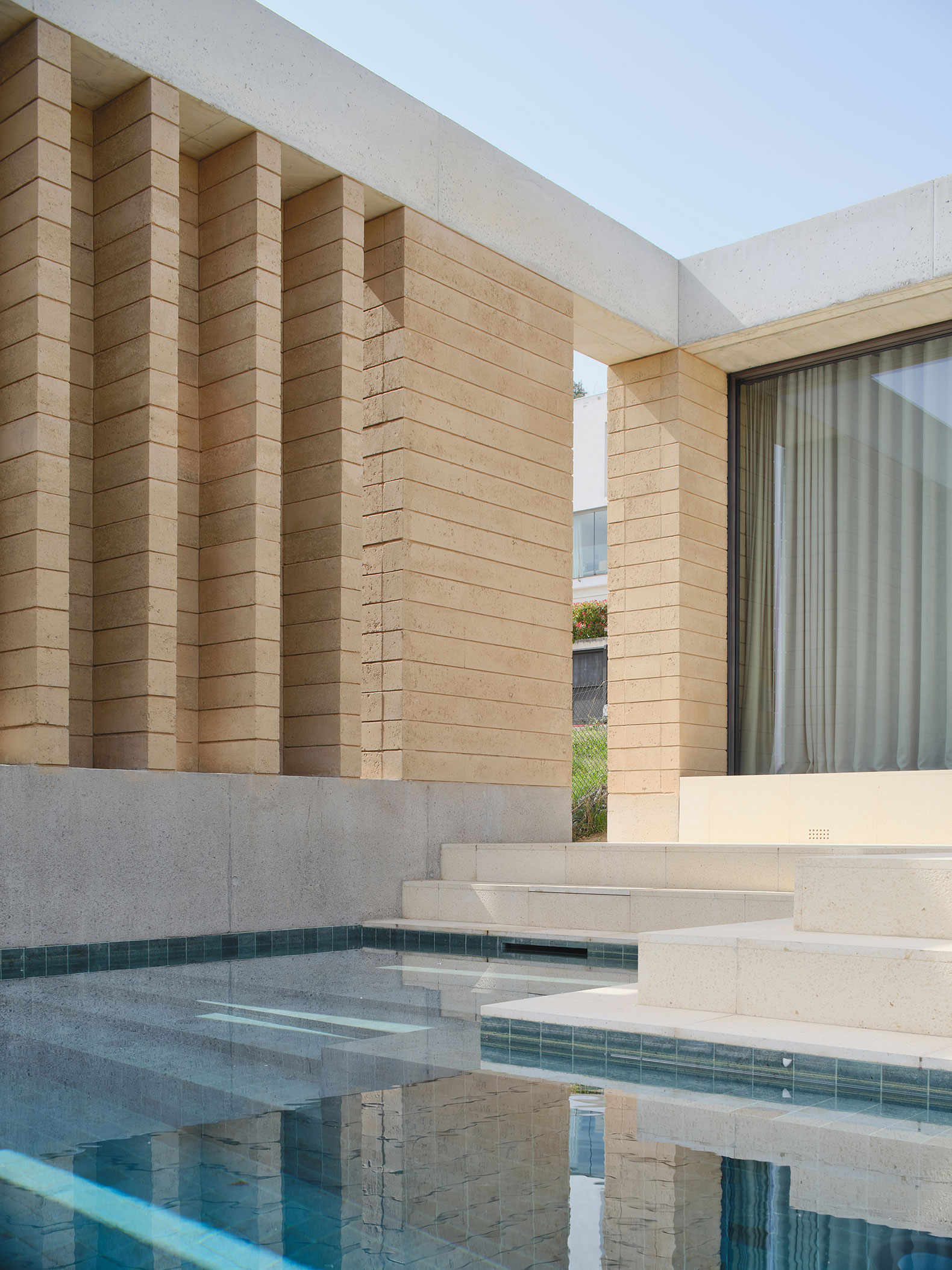
Casa Artiga by Atheleia Arquitectura. Photograph by Adrià Goula.
Project description by Atheleia Arquitectura
The Artiga House is located in the Tenes River valley, in Vallès, Barcelona, in a soft landscape that combines gentle hills and small forests with agricultural plains.
The project is organized around a courtyard with an open view of the landscape. It is a compact house, developed on a ground floor with a lower level dedicated to services. The plot is characterized by a steep slope, with the house positioned in such a way that the exterior spaces are staggered and interconnected, creating visual relationships that break up the compactness of the house.
The courtyard is the center of the house's life, including a swimming pool, generating circulations around it and distributing the day and night spaces. Large porches and protected openings create the connections between the courtyard and the interior of the house.
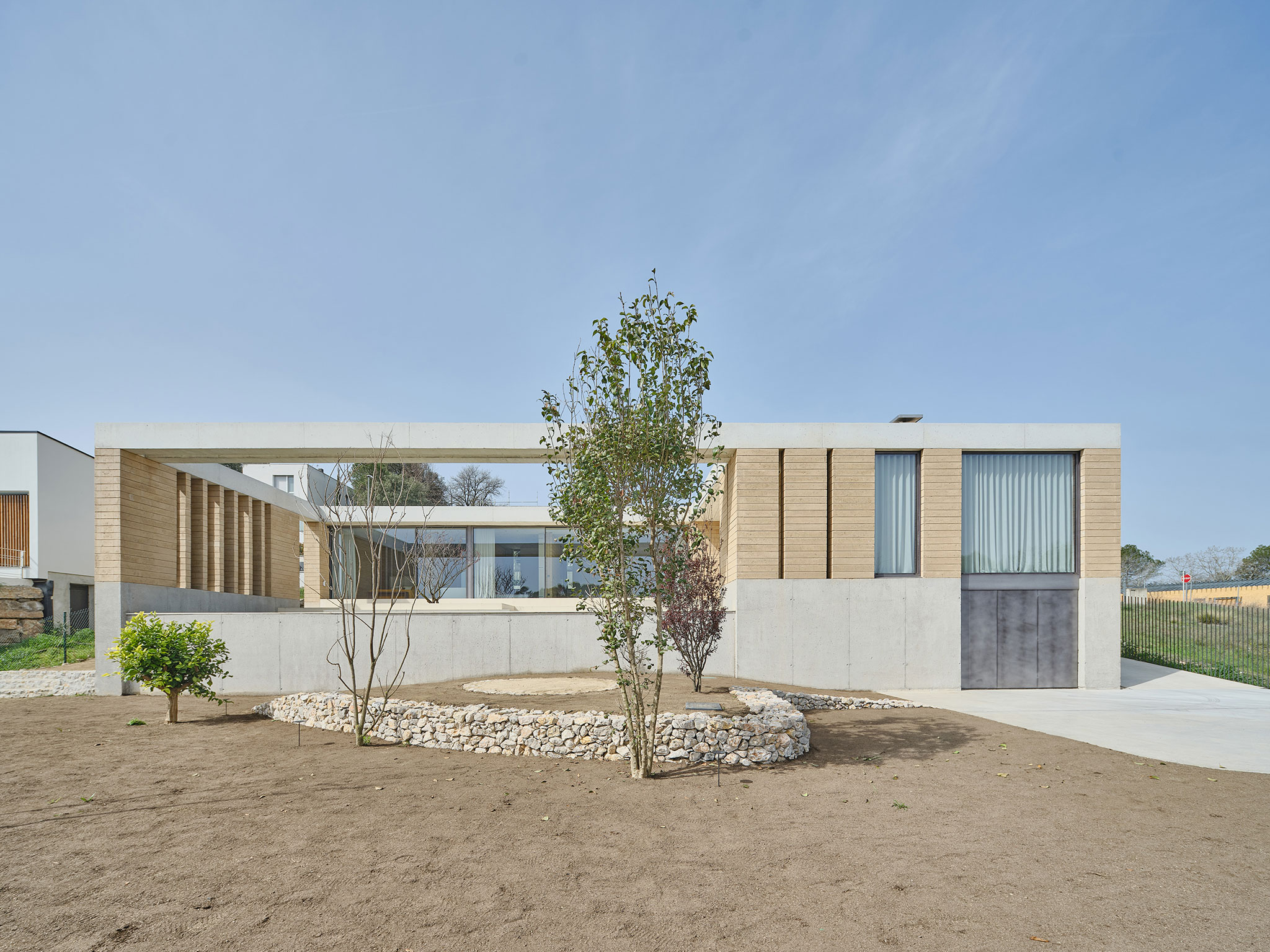
Casa Artiga by Atheleia Arquitectura. Photograph by Adrià Goula.
Constructed with rammed earth walls, the project emphasizes the use of local materials and human resources for sustainable, ecological, and environmentally friendly construction, creating healthy and efficient habitats. The rammed earth walls are used both inside and outside, emphasizing the continuity of the spaces.
Sustainability criteria have been present throughout the entire design and construction process of the house, with passive systems for solar control through the construction of porches and the use of cross ventilation, good thermal insulation of the enclosures, and materials with high thermal inertia. The climate control is complemented by a geothermal system as a source of renewable energy.
